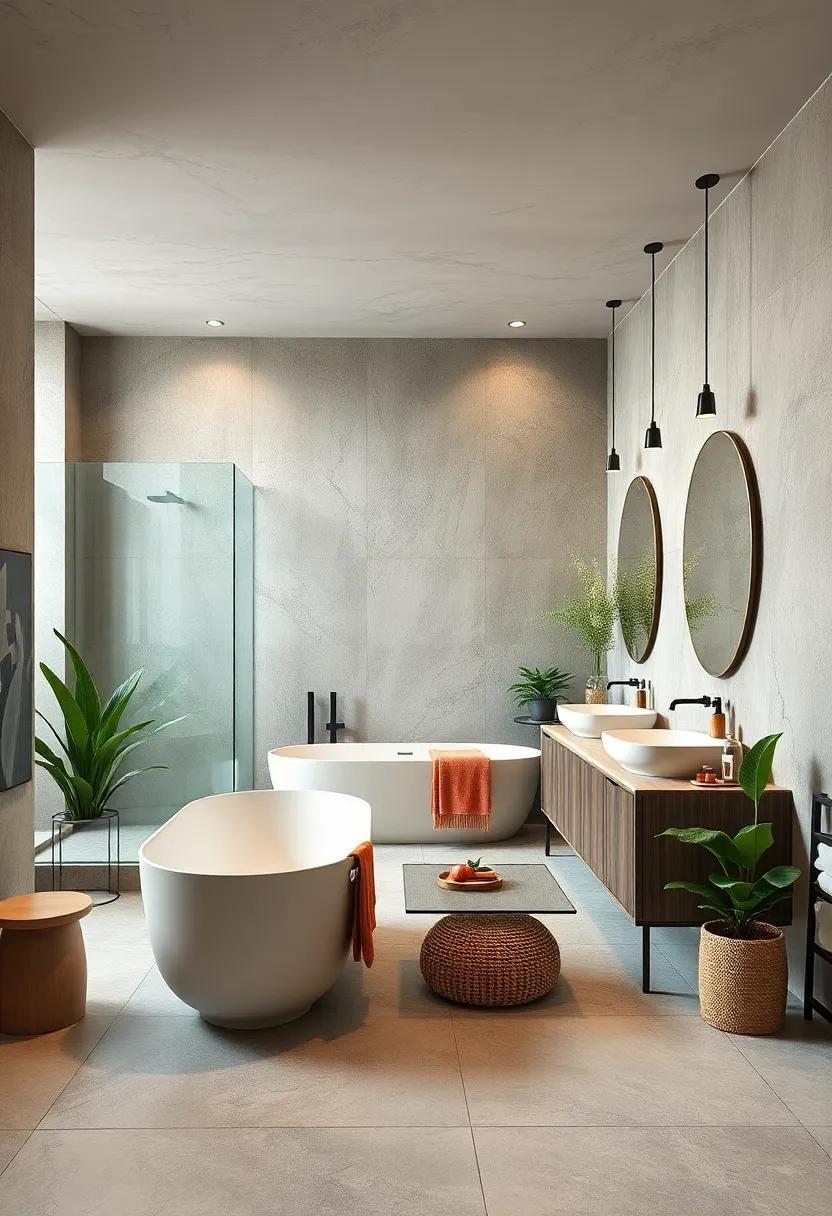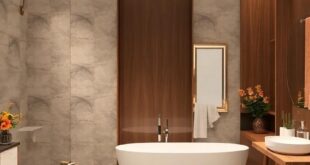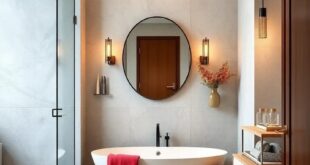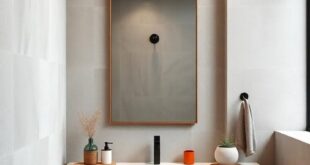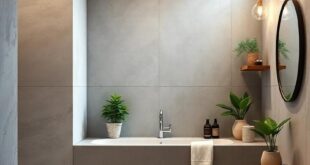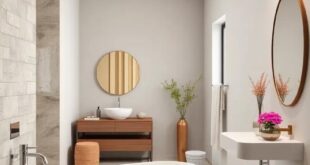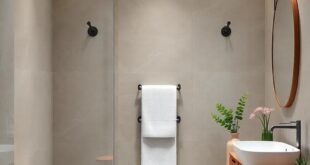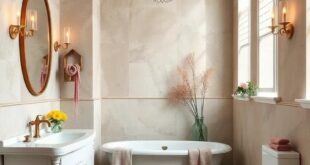In an era where environmental consciousness is reshaping our lifestyles, the spaces we inhabit play a pivotal role in our journey towards sustainability. the bathroom—a sanctuary of relaxation and rejuvenation—is often overlooked in the quest for eco-kind living. Yet, it presents a unique opportunity to transform not only our daily routines but also our impact on the planet. “” delves into innovative design strategies and enduring practices that can turn this essential room into a model of efficiency and environmental harmony.Join us as we explore the intersections of style, functionality, and ecological duty, empowering you to create a bathroom that champions both personal well-being and the health of our planet.
Transforming Your Space with Eco-Friendly Materials For sustainable Bathroom Design
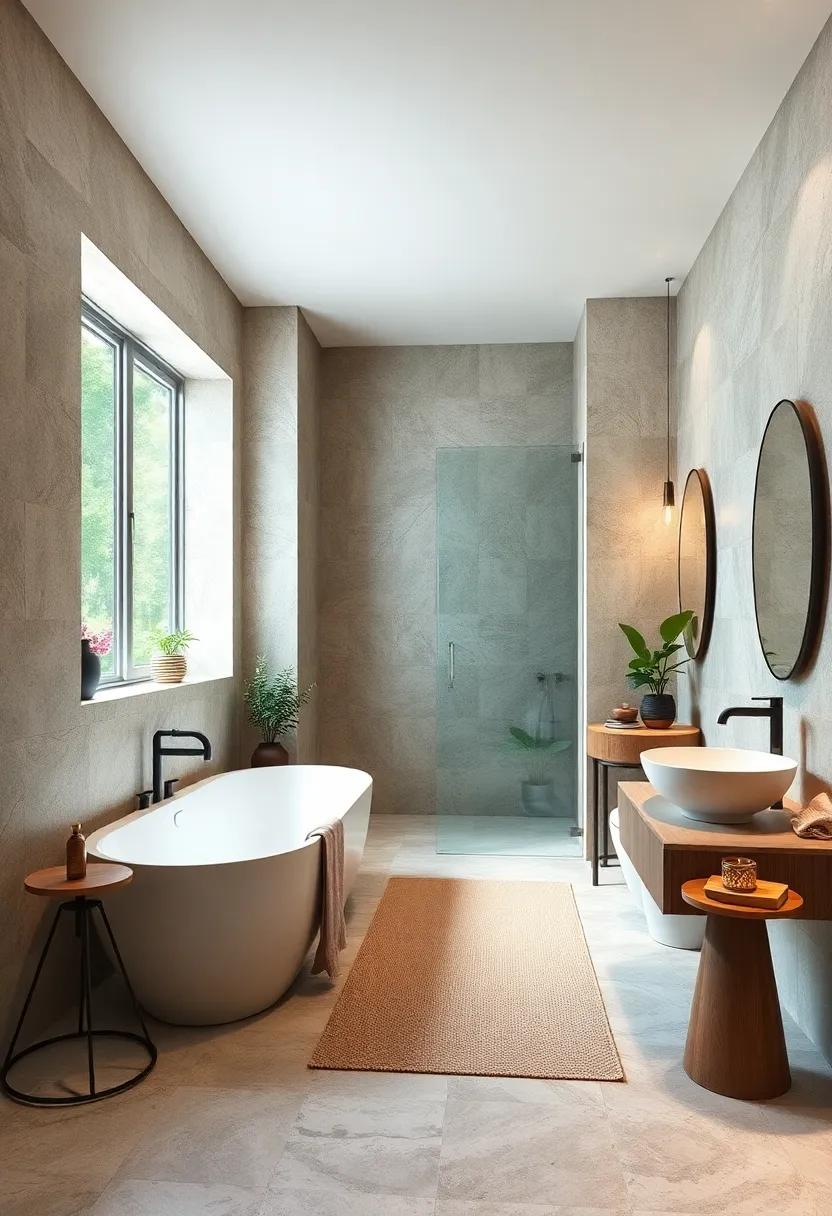
Creating a bathroom that embodies sustainability begins with the choice of materials. Selecting eco-friendly options not only minimizes your environmental footprint but also enhances the aesthetic appeal of the space. Consider using materials such as:
- Bamboo for cabinetry and shelving, known for its rapid growth and renewability.
- Recycled glass tiles for backsplashes, adding color and texture while reducing waste.
- Cork flooring that is soft, durable, and naturally resistant to moisture and mold.
- Low-VOC paints that ensure a healthier indoor air quality during and after application.
In addition to materials, the integration of water-saving fixtures can significantly contribute to your sustainable bathroom design. Implementing high-efficiency toilets, low-flow showerheads, and touchless faucets can enhance water conservation while maintaining performance. To illustrate some effective options, the following table showcases innovative fixtures along with their benefits:
| fixture Type | Water Savings | Benefits |
|---|---|---|
| High-Efficiency Toilet | 1.28 gallons per flush | Reduces water usage by up to 60% |
| Low-Flow Showerhead | 1.5-2.5 gallons per minute | Maintains strong water pressure while saving water |
| Touchless Faucet | Up to 30% water savings | Reduces the risk of germ transmission |
The Essence of Natural Lighting in Creating a Green Bathroom Atmosphere

Natural lighting plays a pivotal role in marrying sustainability with aesthetics in bathroom design. By harnessing the sun’s rays, space transforms into a serene oasis, fostering a sense of calm and connection to the environment. When designing a bathroom with this in mind, consider the following elements:
- Skylights: Allowing sunlight to pour in from above can enhance the mood and reduce reliance on artificial lighting.
- Large Windows: Strategic placement can invite ample sunlight while providing a refreshing view of nature.
- transom Windows: Placing these above doors keeps privacy intact while allowing natural light to filter through.
Incorporating natural light not only enhances the aesthetic appeal but also has practical benefits. Energy consumption diminishes as natural illumination takes the forefront, reducing electricity costs and our carbon footprint. Here’s a concise look at the benefits:
| Benefits | Details |
|---|---|
| Improved Mood | Natural light boosts serotonin levels, creating a more uplifting atmosphere. |
| Enhanced Space Perception | The use of light can make smaller bathrooms feel more expansive and inviting. |
| Eco-friendliness | Reduced need for artificial lighting translates to lower energy use and costs. |
Incorporating Water-Saving Fixtures for an Eco-Conscious Bathroom Experience
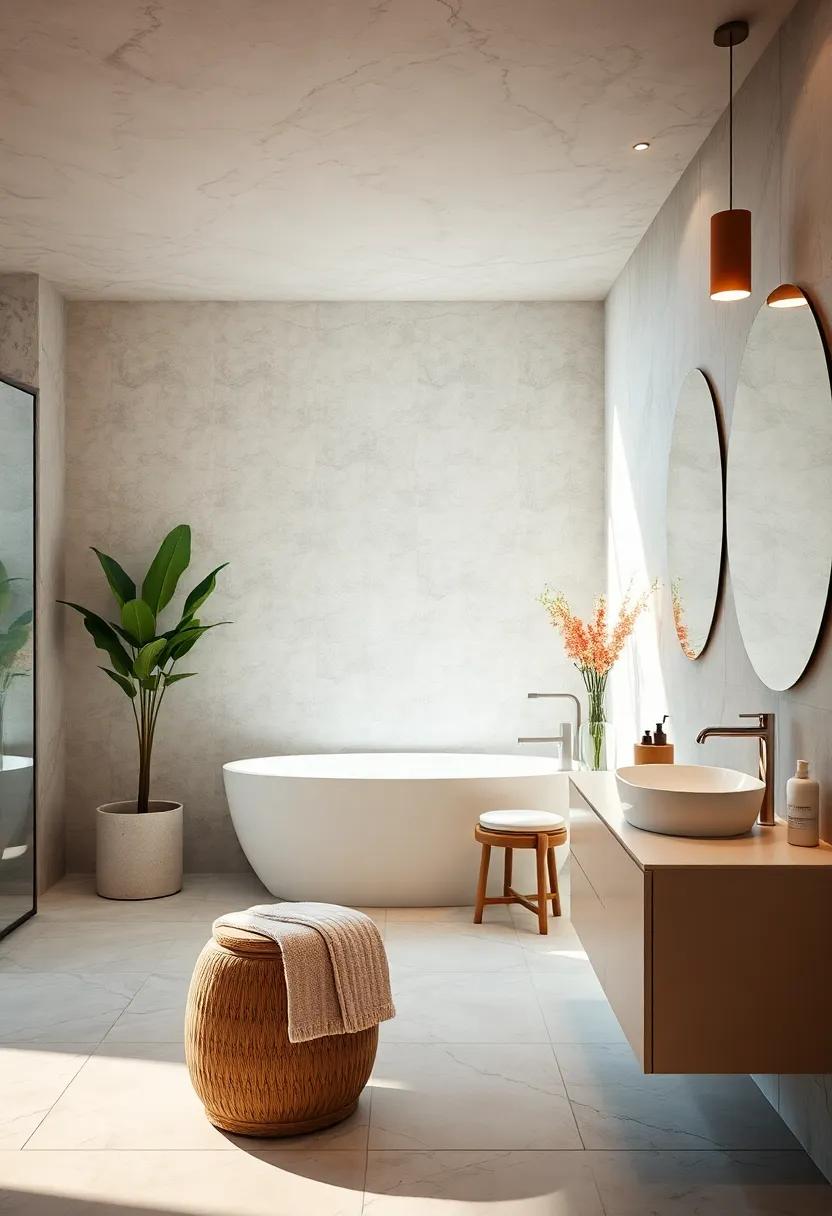
In today’s eco-conscious landscape, upgrading your bathroom with water-saving fixtures is a crucial step towards sustainability. Not only do these modern installations help conserve water, but they also enhance the aesthetics of your bathroom with their sleek designs. Consider incorporating low-flow toilets, water-efficient faucets, and showerheads that use advanced technology to minimize water usage while still delivering an invigorating experience. These fixtures can reduce water consumption by 20% to 60%, depending on the model you choose, which translates not only to a smaller ecological footprint but also to reduced utility bills.
Explore the variety of options available to suit your style and needs. Investing in dual-flush toilets empowers users to choose between a low volume flush for liquid waste and a higher volume flush for solid waste, maximizing efficiency. Pair these toilets with motion-sensor faucets that turn on and off automatically, or aerated showerheads, which mix air with water to maintain pressure while using less flow. Check out the table below to see a comparison of popular water-saving fixtures and their benefits:
| Fixture Type | Water Savings (%) | Key Features |
|---|---|---|
| Low-Flow Toilet | 20-60 | Dual-flush options |
| Water-Efficient Faucet | 30-50 | Aeration technology |
| Aerated Showerhead | 30-50 | Pressure regulation |
Embracing Non-Toxic Paints and Finishes for a Healthier Home Environment
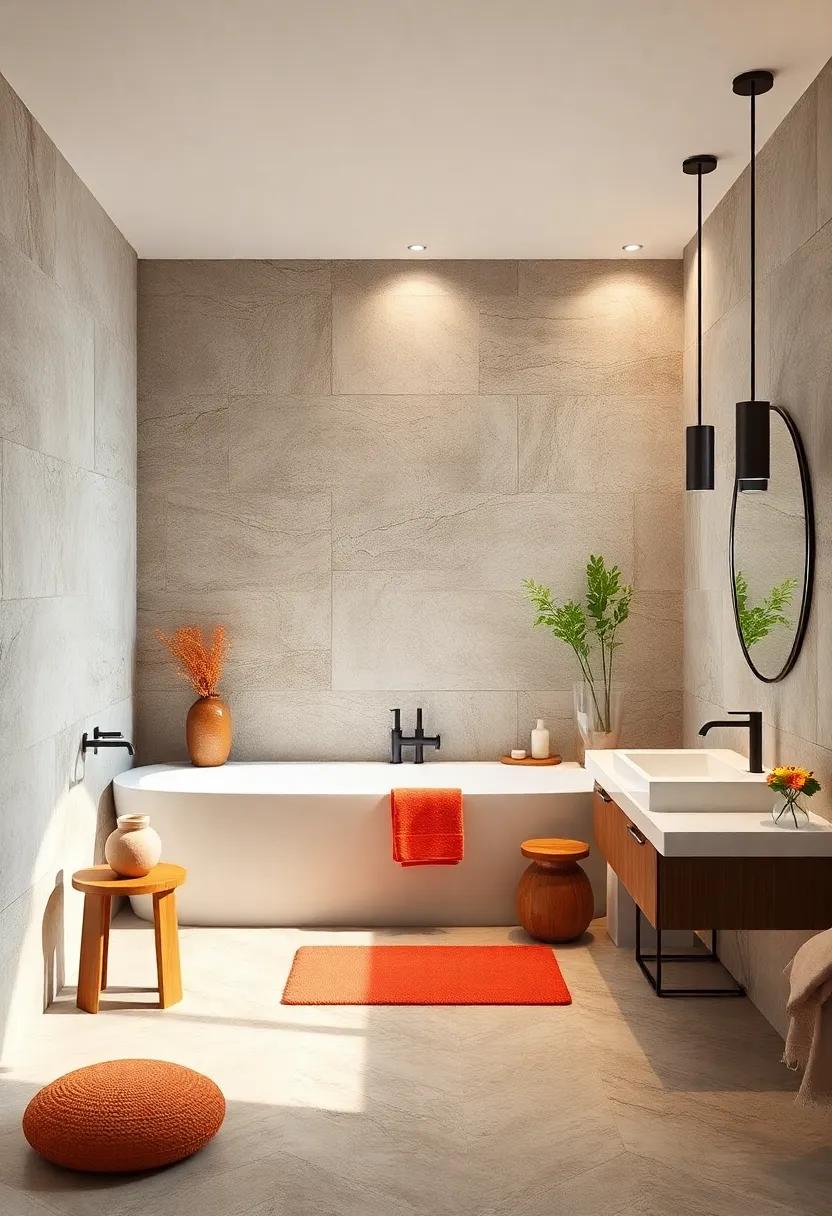
Creating a healthier home environment begins with the materials we choose for our spaces, and non-toxic paints and finishes are a vital element in this transformation.Transitioning from customary options that may contain harmful chemicals to safer alternatives can significantly reduce indoor air pollutants.Non-toxic paints not only promote better air quality but also offer a variety of finishes and colors to suit any aesthetic. consider choosing products that are labeled as low-VOC (volatile organic compounds) or zero-VOC, which minimizes hazardous emissions and contributes to a more sustainable living space.
When selecting non-toxic options, look for brands that prioritize eco-friendly practices and openness. you can make informed choices by exploring the following features:
- Natural Ingredients: Many non-toxic paints are made from organic materials and biodegradable components.
- Durability: high-quality non-toxic finishes offer long-lasting performance, requiring fewer repaints.
- Ease of Application: Many of these products have speedy-drying formulas, reducing project time and improving usability.
To illustrate the options available, consider the following comparison of popular non-toxic paint brands:
| brand | Type | VOC Level | Finishing Options |
|---|---|---|---|
| Behr Premium Plus | Paint | Zero-VOC | Satin, Flat, Eggshell |
| Benjamin Moore Natura | Paint | Zero-VOC | Matte, Satin, Semi-Gloss |
| ECOS Paints | Paint | Zero-VOC | Flat, Satin, Gloss |
Choosing Recycled and Upcycled Elements for a Unique Bathroom aesthetic
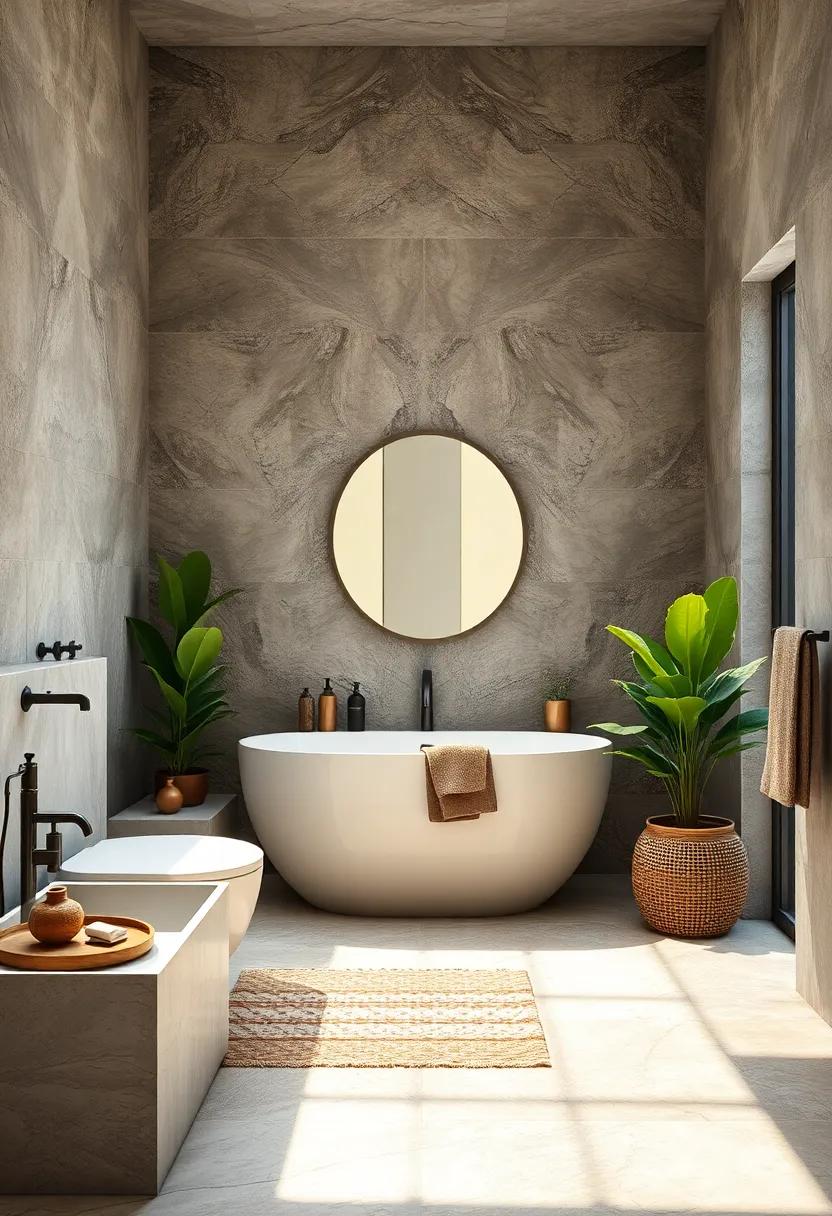
Incorporating recycled and upcycled elements into your bathroom design not only adds a distinctive flair but also champions the cause of sustainability. Consider utilizing reclaimed wood for shelves or vanities, which brings warmth and character while minimizing deforestation. Vintage tiles can be reimagined as striking accent pieces, showcasing unique patterns and colors that tell a story of years gone by. Here are a few options to inspire your sustainable design:
- Reclaimed Fixtures: Faucets and showerheads crafted from repurposed materials.
- Upcycled Decor: Transform old jars into stylish storage solutions.
- Repurposed furniture: A vintage dresser can be converted into a chic vanity.
Moreover,opting for upcycled materials can serve as exciting conversation starters while elevating your space’s aesthetic. Glass bottles can be creatively used as pendant lights, casting a unique glow while promoting eco-friendliness.Another delightful option is integrating salvaged stone or concrete for countertops, each piece boasting its own history and character.here’s a simple table to summarize additional materials and their potential applications:
| Material | Application |
|---|---|
| Recycled Glass | Shower Tiles |
| Wood Pallets | Wall Panels |
| Old Bathtubs | Planters |
| Textiles | Eco-Friendly Towels |
blending Indoor Plants With Bathroom Design for Natural Air Purification
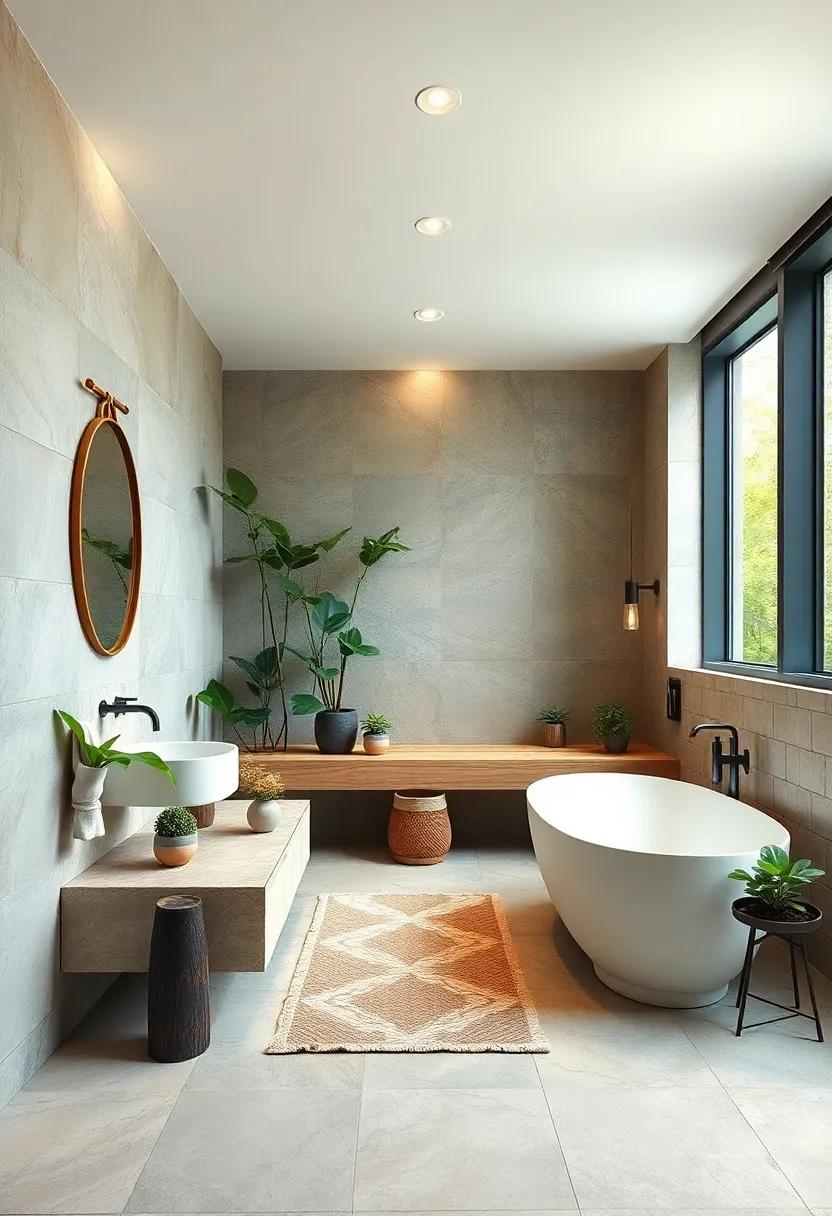
Incorporating indoor plants into your bathroom design not only enhances the aesthetic appeal but also promotes natural air purification. Plants like spider plants, peace lilies, and ferns thrive in humid environments, making them perfect companions for your spa-like retreat. By strategically placing them on shelves, in hanging planters, or even integrated into the wall, you can create a lush oasis that contributes to a healthier living space. The presence of greenery doesn’t just beautify; it actively absorbs toxins and releases oxygen, ensuring that every breath you take in your bathroom is rejuvenating.
To maximize the air-purifying benefits, consider creating a mini indoor garden that leverages the unique characteristics of each plant. below is a simple table highlighting a few ideal plants for bathroom sanctuaries:
| Plant | Benefits |
|---|---|
| Spider Plant | Removes formaldehyde, versatile in low light |
| Peace Lily | Reduces airborne toxins, promotes humidity |
| Boston Fern | Excellent humidity absorber, filters formaldehyde |
| Aloe Vera | Soothes skin, emits oxygen at night |
By embracing a variety of plants, you can cultivate a calming atmosphere that not only purifies the air but also invites a connection to nature within your home. Pairing earthy materials like bamboo or reclaimed wood with these green elements fosters a harmonious balance,enhancing your bathroom as an eco-friendly sanctuary.
Utilizing Solar Energy Solutions to Power Your Sustainable Bathroom
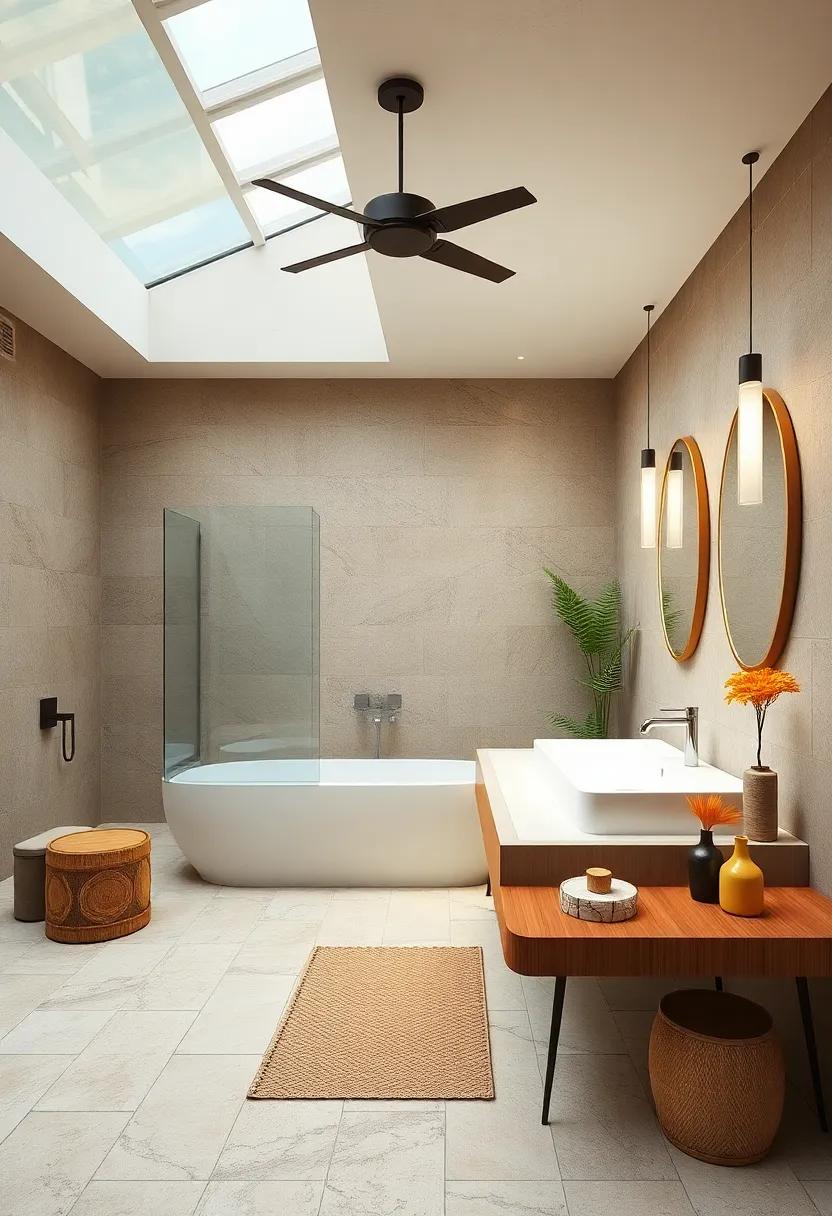
Harnessing the power of the sun can significantly elevate the eco-friendliness of your bathroom. By integrating solar energy solutions, you can reduce your reliance on traditional electricity, resulting in a smaller carbon footprint and lower utility bills. Consider implementing the following solar options:
- Solar Water Heaters: These systems use solar energy to heat water, providing hot water for your showers and sinks without the environmental impact of gas or electric heaters.
- Solar-Powered Ventilation Fans: Ensure proper airflow in your bathroom by using fans that run on solar energy, enhancing ventilation without additional electricity costs.
- Solar Lighting: Replace traditional lighting with solar-powered fixtures. These can be installed both inside and outside your bathroom, brightening the space sustainably.
Incorporating solar solutions not only enhances your bathroom’s sustainability but can also result in a stylish design. With modern aesthetics in mind,many solar products come in various designs,integrating smoothly into your decor. To showcase the environmental and cost benefits, consider the following table summarizing potential savings:
| Feature | Annual Savings ($) | Environmental impact (CO2 Reduction, lbs) |
|---|---|---|
| Solar Water Heater | 500 | 2,000 |
| Solar Ventilation Fan | 100 | 400 |
| Solar Lighting | 60 | 240 |
Crafting a Minimalist Bathroom Design to Reduce Waste and Enhance Functionality
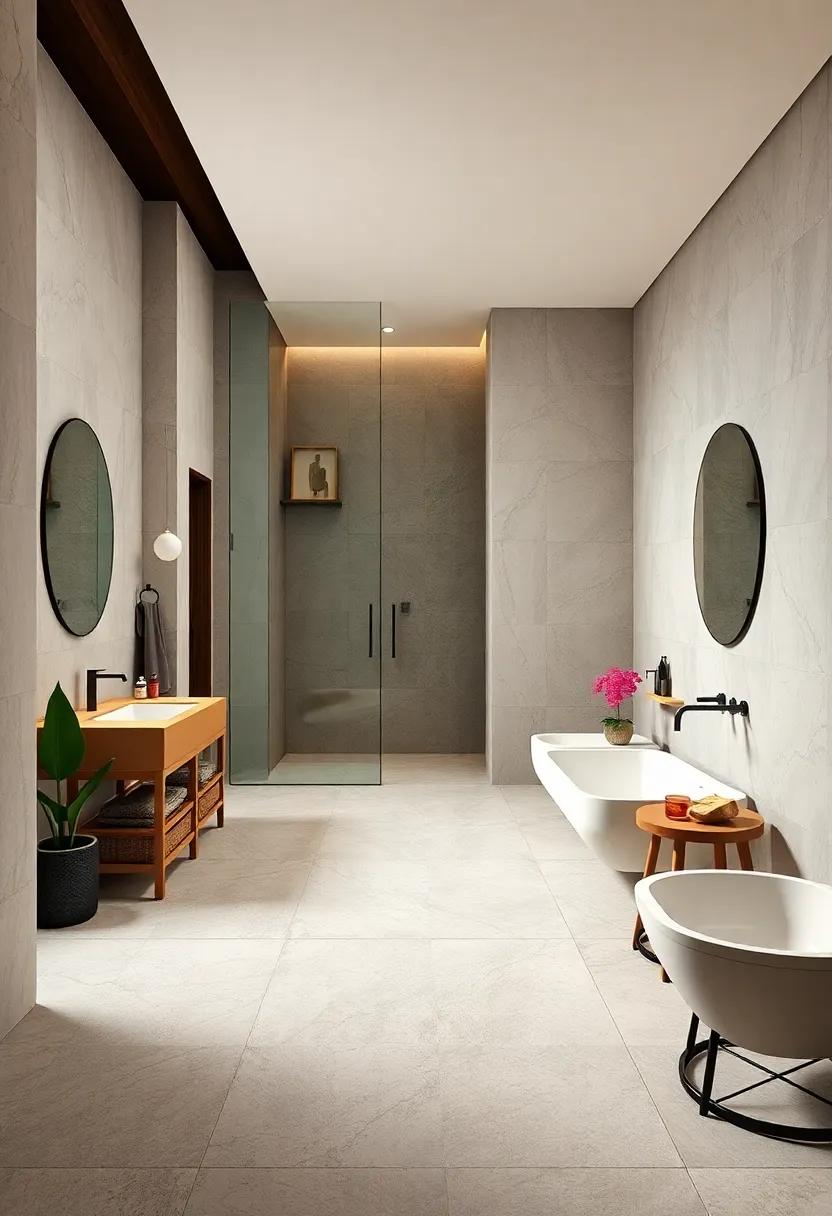
To create a bathroom space that balances sustainability with functionality, begin by embracing a minimalist aesthetic. This approach not only reduces clutter but also encourages the selection of essential items that serve multiple purposes. Consider incorporating features such as:
- Dual-flush toilets that conserve water without compromising performance.
- Low-flow faucets</ and showerheads to minimize water usage.
- Natural materials, like bamboo or recycled glass,for sustainable decor options.
- Compact storage solutions that keep items organized while maximizing space.
When selecting fixtures and accessories, focus on quality over quantity, ensuring that each item not only contributes to the overall aesthetic but also aids in reducing waste. Explore eco-friendly brands that offer sustainable products, such as:
| Brand Name | Specialty | Sustainability Aspect |
|---|---|---|
| EcoVessel | Water bottles & containers | Made from recycled materials |
| NERD | Modular Storage | Made from reclaimed wood |
| Bathing Culture | Body wash & Shampoo | Plastic-free packaging |
Exploring Space-Saving Solutions That Promote Sustainability and Efficiency
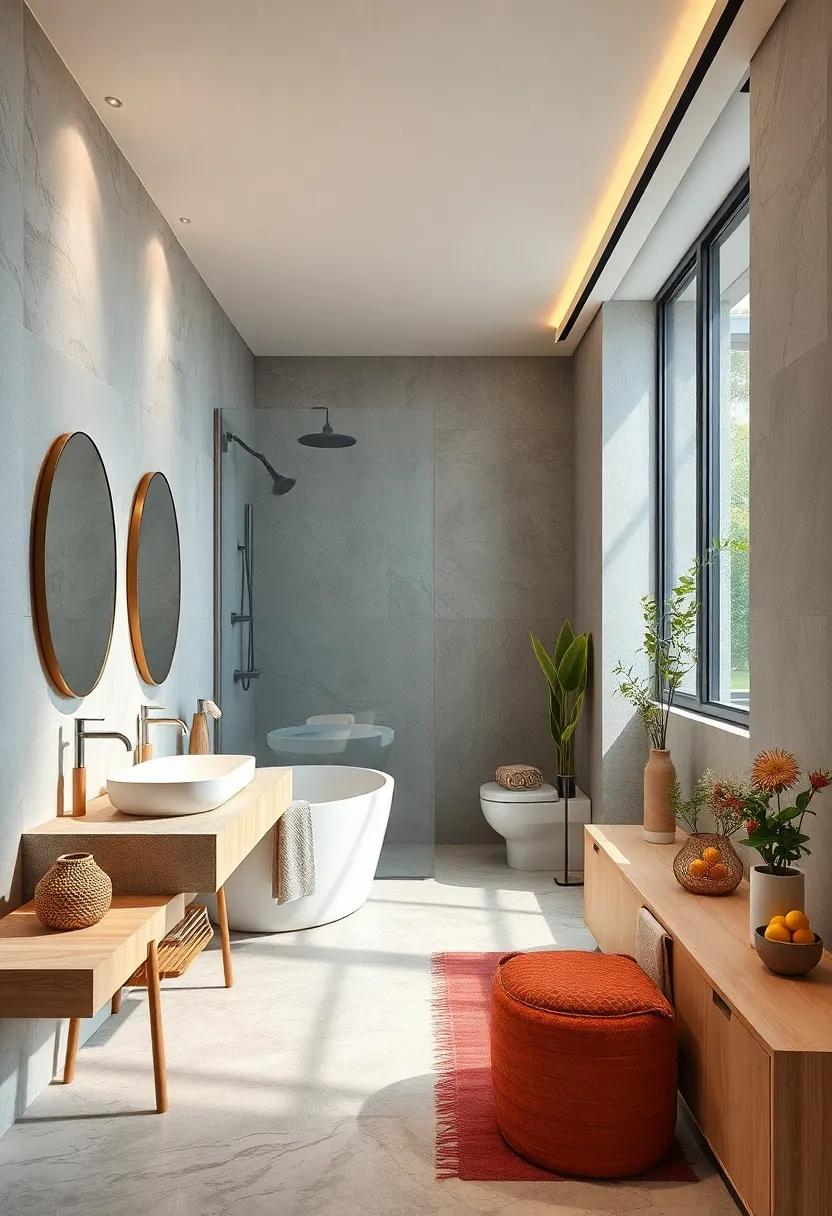
One of the most effective ways to cultivate a greener bathroom is by opting for space-saving fixtures that are designed with eco-friendliness in mind.transitional cabinetry,wall-mounted sinks,and compact toilets not only conserve water but also maximize floor space,creating an illusion of openness. Consider the use of multifunctional furniture, such as vanities that incorporate hidden storage. this not only reduces clutter but also decreases the need for additional materials, promoting a minimalist approach that harmonizes with sustainable design principles.
Additionally, integrating energy-efficient appliances can significantly reduce your bathroom’s overall carbon footprint. Look for products labelled with Energy Star ratings to ensure optimal performance while minimizing energy consumption. Below are a few examples of sustainable choices that efficiently utilize space:
| Fixture Type | Eco-Friendly Option |
|---|---|
| Toilet | Dual-flush system |
| Shower Head | low-flow design |
| Lighting | LED fixtures |
Incorporating natural materials such as bamboo or reclaimed wood can further enhance sustainability while providing a unique aesthetic. These elements not only blend well with neutral palettes but also contribute to a healthier indoor environment by reducing harmful off-gassing common with synthetic materials. By thoughtfully selecting space-efficient and sustainable elements, you can create a bathroom that not only functions well but also contributes to a greener world.
selecting Sustainable Accessories That Add charm and Function to Your Bathroom
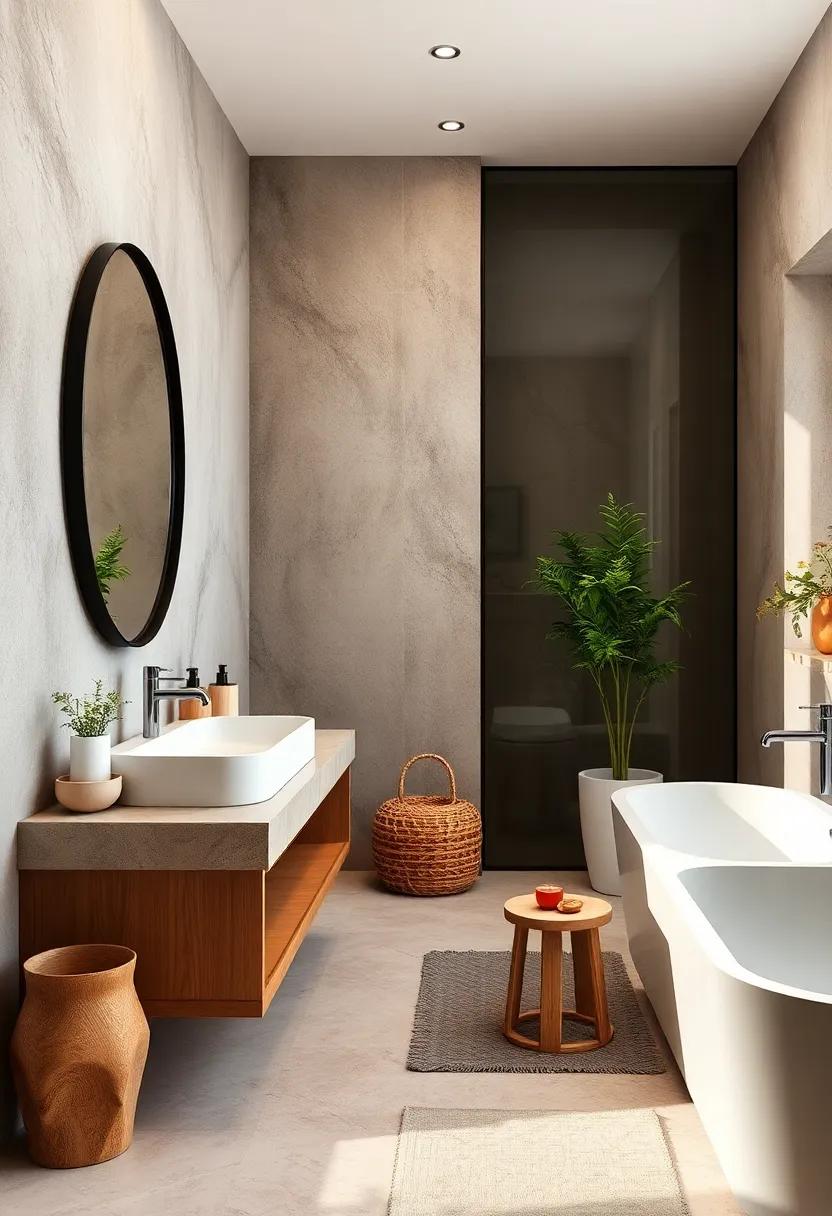
Incorporating sustainable accessories in your bathroom not only enhances its overall aesthetic but also contributes to a more eco-friendly lifestyle. Look for items made from renewable resources such as bamboo, recycled glass, and organic cotton. When selecting accessories, consider options like:
- Biodegradable shower curtains that are free from PVC and harmful chemicals.
- Reclaimed wood shelves to add a rustic charm while promoting sustainable practices.
- Natural fiber rugs that provide warmth underfoot and are compostable at the end of their life cycle.
For a functional yet stylish look, consider choosing accessories that serve multiple purposes. Stylish storage containers crafted from sustainable materials can help declutter while showcasing your commitment to the environment. Another excellent choice is a water-saving showerhead,which reduces water consumption without sacrificing performance. To give you a clearer picture, here’s a concise comparison of popular sustainable accessories:
| Accessory | Material | Functional Benefit |
|---|---|---|
| Shower Curtain | Biodegradable PVC-free | Eco-friendly, reduces plastic waste |
| Storage Baskets | Recycled Plastic | Stylish organization, promotes recycling |
| Bath Mat | Organic Cotton | Soft, absorbent, and compostable |
Creating a Spa-Like experience With Eco-Friendly Textiles and Materials
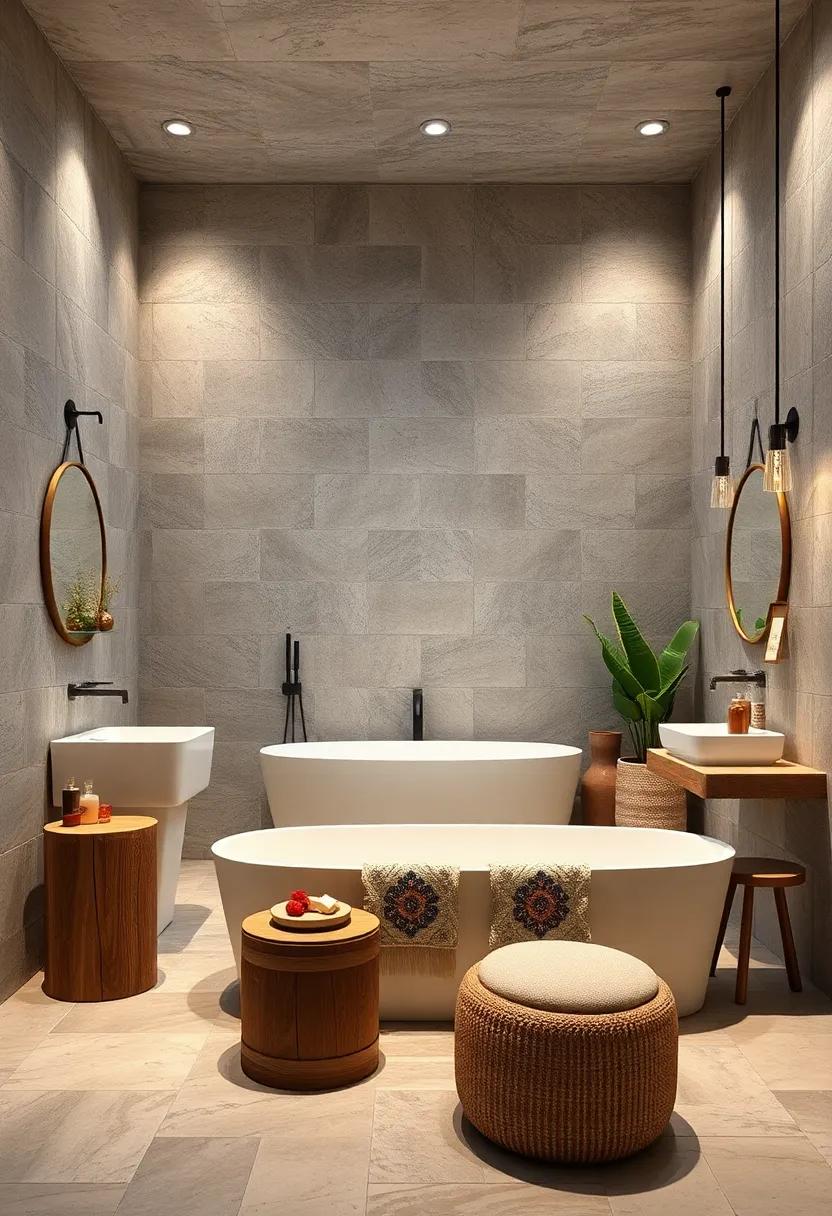
Transform your bathroom into a sanctuary by incorporating eco-friendly textiles and materials that evoke a soothing spa atmosphere. Begin with organic cotton towels and bamboo bath mats,which not only provide comfort but also minimize environmental impact. Consider using linen shower curtains made from sustainably sourced fibers. The natural textures and breathable qualities of these materials enhance the serene ambiance, making your space not just functional but also a restful retreat. Integrate elements like recycled glass accessories and natural stone countertops to add a touch of elegance while ensuring an eco-conscious approach.
To elevate your spa-like experience, opt for a color palette inspired by nature. Shades of soft greens, tranquil blues, and earthy tones promote relaxation. Implementing biodegradable soap dispensers and reusable cotton rounds adds practicality without sacrificing sustainability. Don’t forget about your lighting; using LED fixtures and solar-powered lamps can provide a warm glow while reducing energy consumption. The careful selection of every element in your bathroom not only creates a visually appealing space but also supports a healthier planet.
Incorporating Smart Technology to Optimize Water and Energy Use
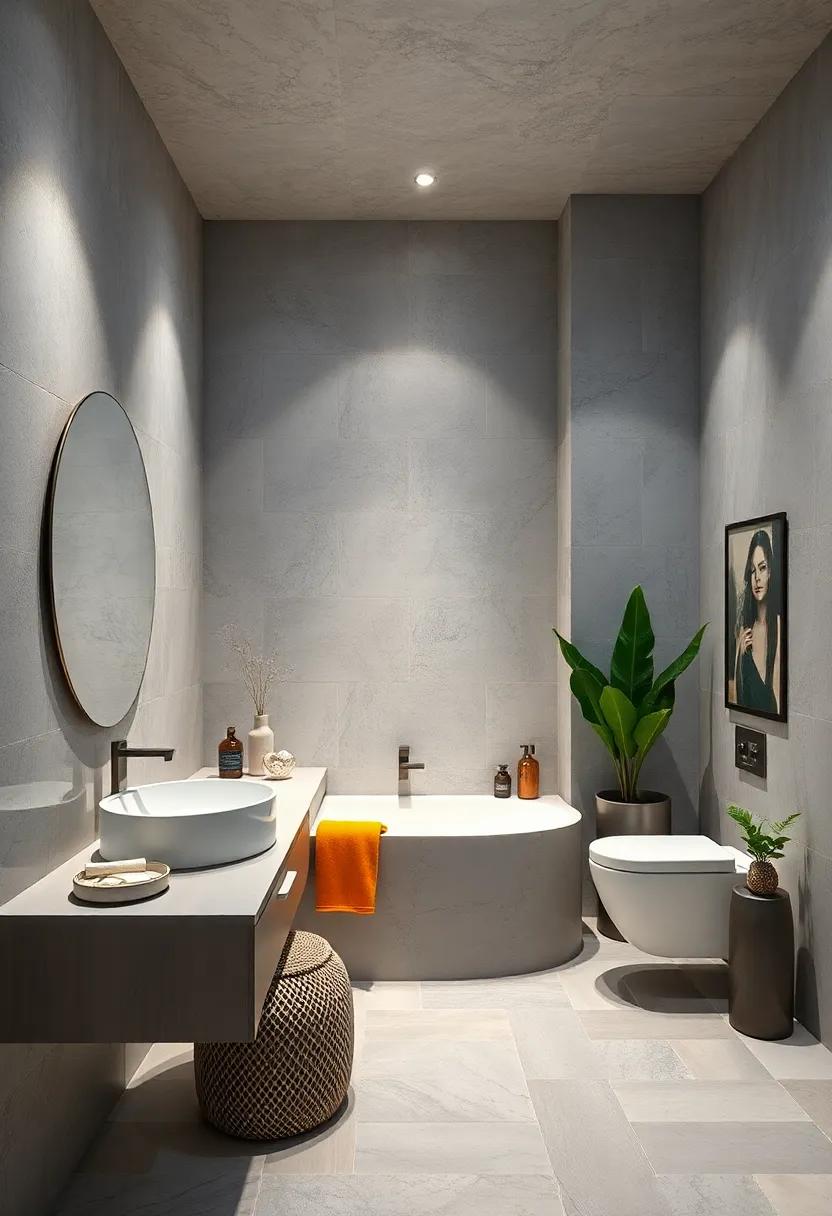
Integrating smart technology into your bathroom design is a game-changer for conserving resources. Advanced systems allow you to monitor and control your water and energy consumption with ease. Consider adding features like:
- Smart faucets: These automatically adjust water flow based on usage, minimizing waste.
- Water-efficient showerheads: Smart technology can regulate the temperature and pressure, ensuring a comfortable yet efficient shower.
- Energy-saving lighting: Motion sensors can turn lights on and off as needed, while dimmers can optimize energy use throughout the day.
Additionally, smart irrigation systems can be applied to bathrooms that include indoor plants. These systems can monitor soil moisture levels and adjust watering schedules automatically, ensuring your plants thrive without overuse of water.Moreover, installation of:
| Smart Device | Functionality |
|---|---|
| Smart thermostat | Regulates temperature based on occupancy and preferences. |
| Leak Detection Sensors | Alerts you of leaks to prevent water waste and damage. |
relying on these innovations not only promotes sustainability but also enhances the overall functionality of your bathroom space.
Understanding the Benefits of Low-Flow toilets in sustainable Bathroom Design
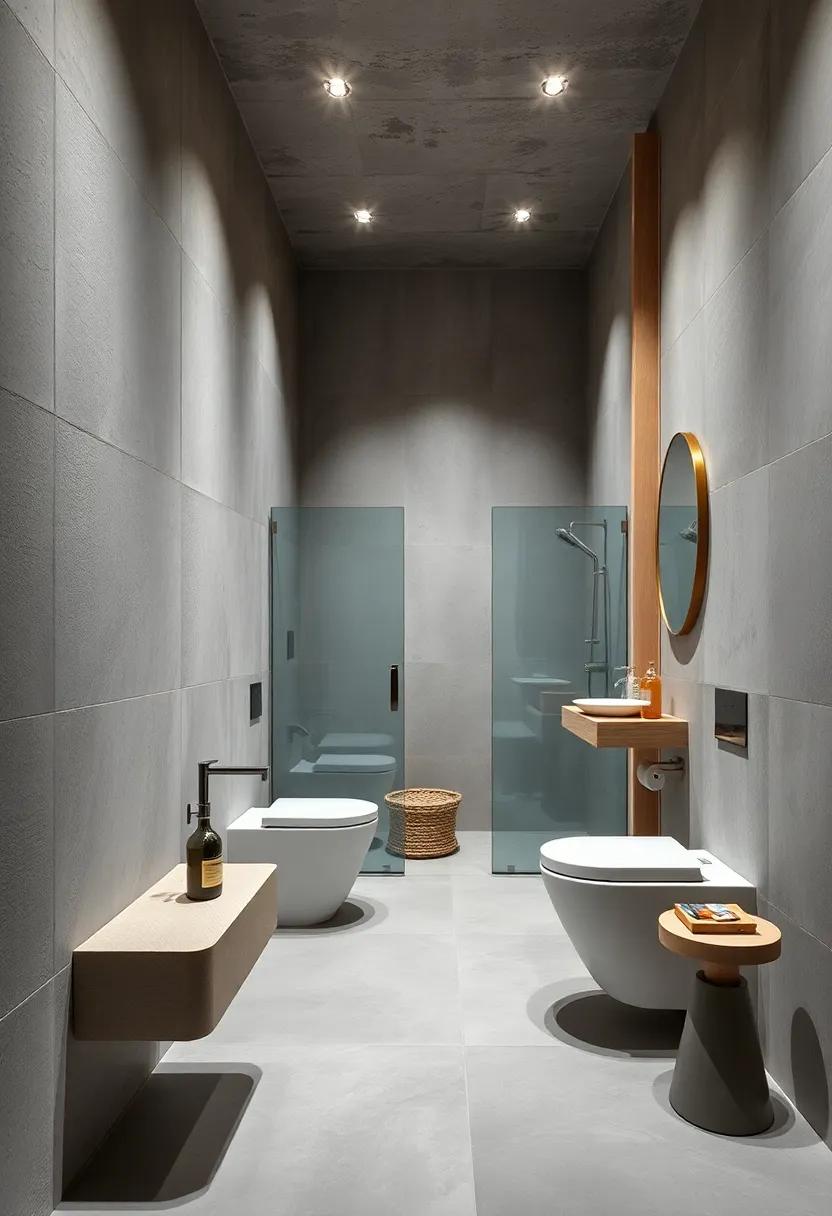
In the quest for sustainable bathroom design, low-flow toilets stand out as a remarkable innovation that combines environmental consciousness with modern efficiency. By utilizing advanced water-saving technology,these toilets significantly reduce water consumption without compromising performance. Utilizing only 1.28 gallons per flush compared to traditional models that use up to 3.5 gallons, low-flow toilets can lead to considerable savings on water bills. This decrease in water usage not only benefits the household finances but also plays a pivotal role in conserving precious water resources and protecting local ecosystems.
Moreover,the integration of low-flow toilets can significantly contribute to the overall sustainability of bathroom spaces. Many of these fixtures are designed with stylish aesthetics in mind, ensuring that homeowners do not have to sacrifice design for function.This innovative spirit in water conservation is also reflected in the variety of options available, allowing individuals to choose toilets that complement their unique bathroom themes. Implementing low-flow models not only marks a responsible choice for the environment but also helps in showcasing a commitment to a greener future, making a positive statement in sustainable living.
Highlighting Sustainable Storage Solutions for an organized Bathroom Environment
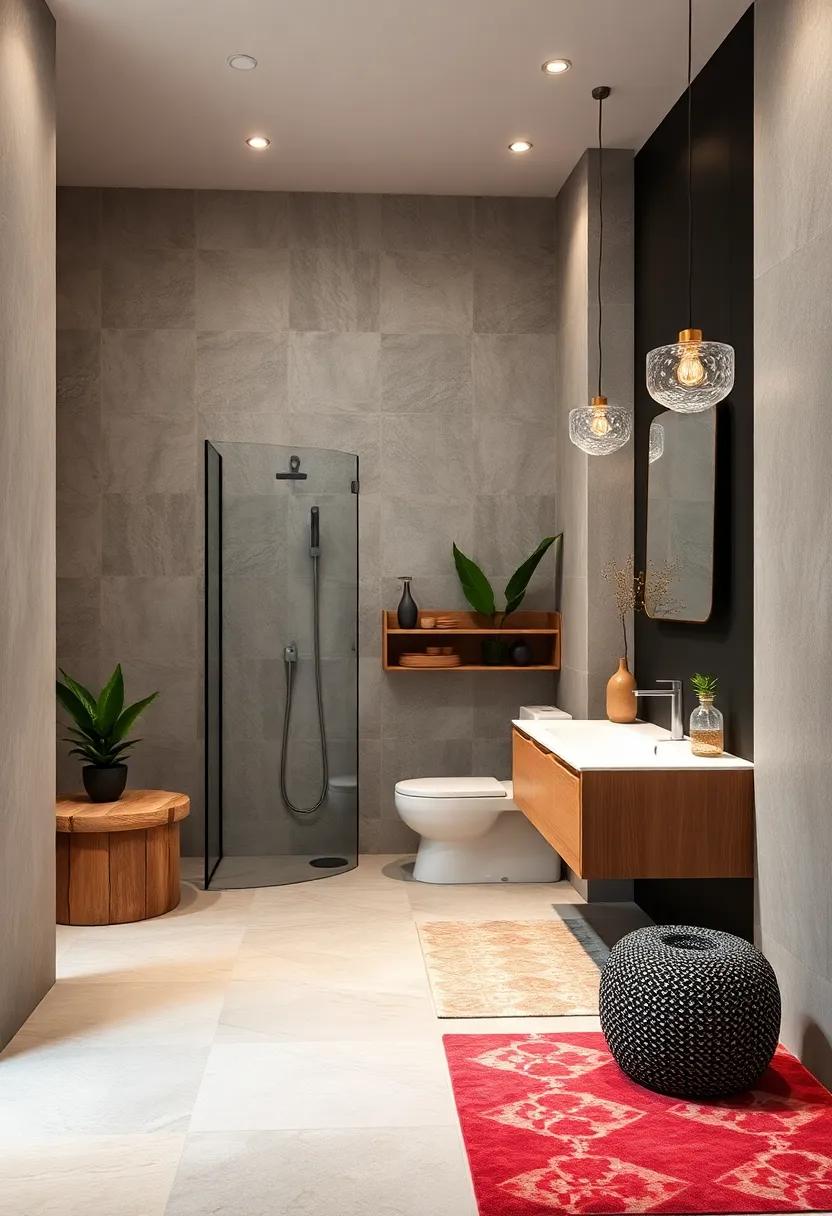
Creating a clutter-free oasis in your bathroom doesn’t have to come at the expense of the environment. By opting for sustainable storage solutions, you can effectively organize your space while minimizing your ecological footprint.Consider implementing these eco-friendly options:
- Bamboo Shelving: Lightweight and durable, bamboo shelves not only provide ample space for toiletries but also add a touch of natural elegance.
- Recycled Plastic Containers: Choose containers made from post-consumer waste—perfect for organizing small items like cotton balls or hair accessories.
- Repurposed Materials: Utilize old crates or reclaimed wood to create unique storage solutions that showcase your personality.
- Biodegradable Baskets: Opt for baskets made from natural fibers, which can serve as both storage and an attractive decorative element.
Maximizing vertical space is a key strategy in maintaining organization while fostering sustainability. Installing wall-mounted storage options can keep daily essentials within easy reach without taking up precious floor space. A well-curated selection of hanging organizers can help you achieve this goal. Below is a simple comparison of effective vertical storage solutions:
| Storage Option | Benefits |
|---|---|
| Wall-mounted racks | utilizes vertical space, easy access |
| Hanging hooks | Great for towels and robes, adds charm |
| Magnetic strips | Perfect for storing metal tools, tidy look |
| Over-the-door organizers | Utilizes existing doors, versatile storage |
Focusing on Local Sourcing to Support Sustainable Bathroom Design Practices
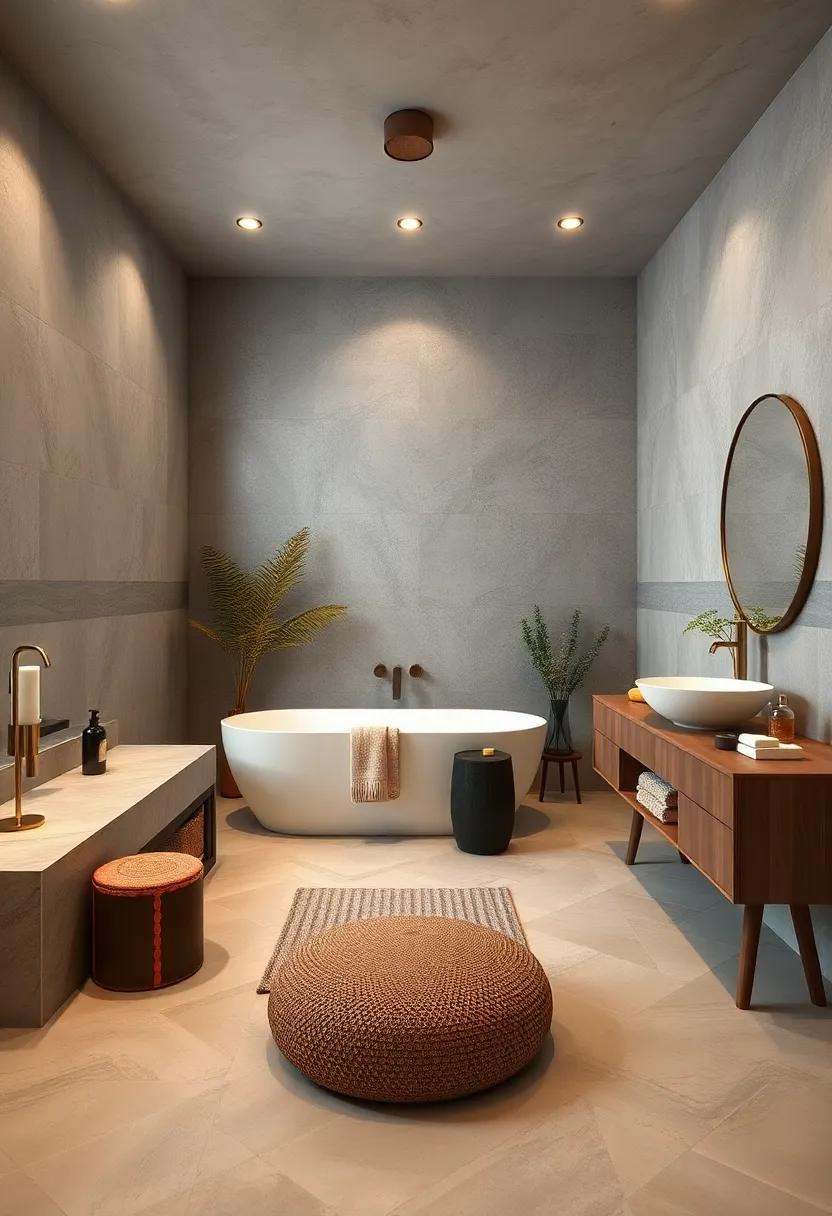
Embracing local sourcing not only enhances the aesthetic appeal of your bathroom but also contributes significantly to sustainable design practices. By opting for materials and products sourced from nearby manufacturers, you directly reduce the carbon footprint associated with transportation. Consider integrating local natural stone, sustainably harvested wood, or artisan-crafted fixtures into your renovation plans. This approach supports local economies while ensuring the authenticity and quality of your materials. Here are some benefits of local sourcing:
- Lower Environmental Impact: Reduced transportation distances mean fewer emissions.
- Unique Aesthetic: Local materials often reflect the regional character and culture.
- Support for Local Artisans: Directly investing in your community promotes craftsmanship.
When you choose locally sourced products, it empowers you to ask pertinent questions about sustainability practices and material origins.These conversations can uncover inspiring stories of how your chosen pieces were crafted and the natural resources that went into them. To assist in your decision-making, consider the following table that highlights some popular local materials and their benefits:
| material | Benefits |
|---|---|
| Reclaimed Wood | Reduces waste and adds character |
| Local Stone | Durable, unique, and low-emission |
| Ceramic Tiles | Support local artisans while ensuring variety |
Using Timeless Design Elements to Reduce Waste and Enhance Longevity
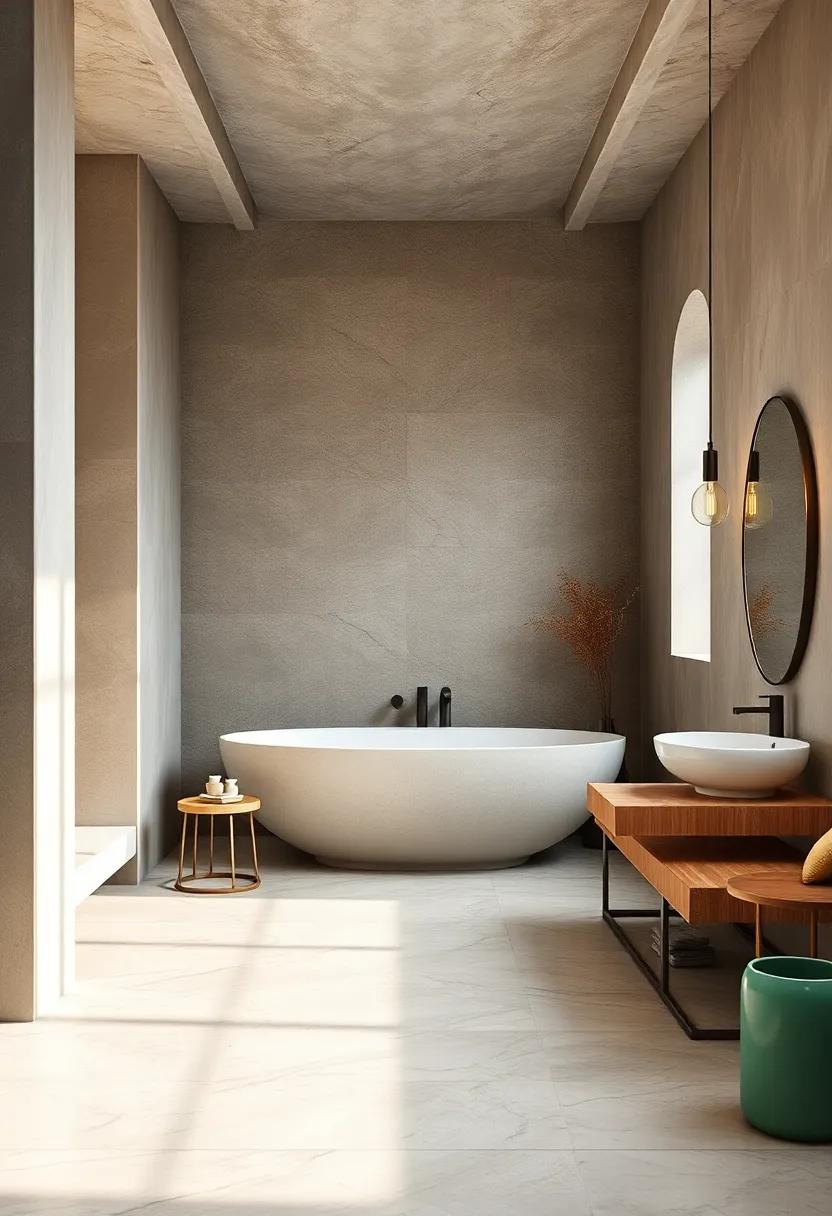
In the quest for a sustainable bathroom, incorporating timeless design elements can significantly contribute to reducing waste and enhancing the longevity of your space. Natural materials such as stone, reclaimed wood, and ceramics not only evoke a sense of tranquility but also age beautifully over time, avoiding the need for frequent replacement. Select fixtures that embody classic craftsmanship—think of vintage-inspired faucets or handmade tiles that resonate with enduring aesthetics while prioritizing durability. By blending modern sustainability with traditional design, you can create a bathroom that withstands the whims of trends yet feels fresh and relevant.
Additionally, embracing a neutral color palette ensures your space remains appealing for years to come, minimizing the temptation for renovations driven by changing tastes. When planning your layout,consider designs that facilitate easy maintenance and repair,such as modular shelving and swap-out features to adapt to your needs over time without extensive renovation. To further underscore your commitment to sustainability, utilize a green product checklist to ensure each element—be it a low-flow fixture or VOC-free paint—aligns with ecological principles while reinforcing the aesthetic of your sanctuary.
| Element | Benefits |
|---|---|
| Natural Materials | Durable, timeless appeal |
| Neutral Palette | Reduces need for frequent updates |
| Modular design | Flexible, easily adaptable |
| Eco-friendly Fixtures | Reduces water and energy consumption |
Integrating Green Cleaning Products for a Chemical-Free Bathroom Experience
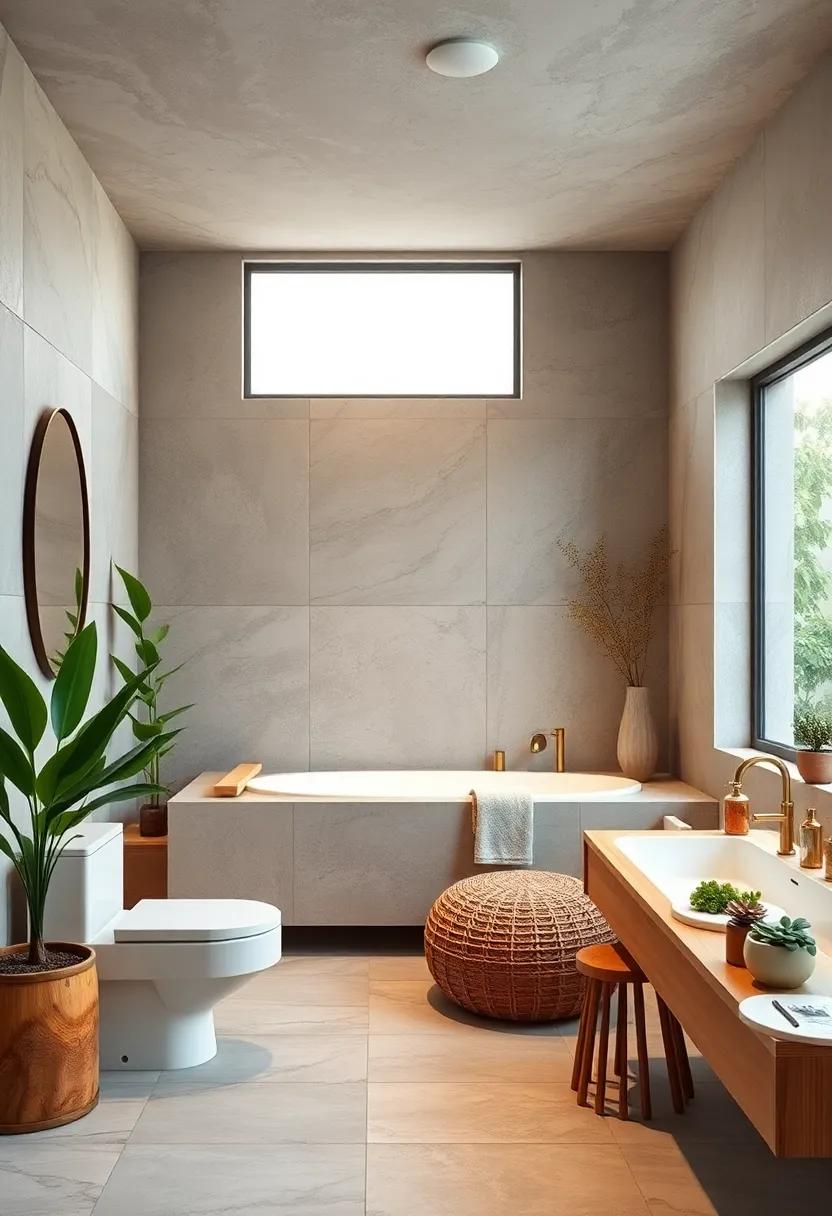
Transforming your bathroom into a sanctuary of sustainability begins with the careful selection of cleaning products. By integrating green cleaning products into your daily routine, you contribute to a healthier environment while ensuring a sparkling clean space. These eco-friendly alternatives harness the power of plant-based ingredients, avoiding harsh chemicals that can trigger allergies or respiratory issues. As you seek to create a serene atmosphere, consider the following options:
- Vinegar and Baking Soda: A classic combination effective for tackling soap scum.
- Citrus-Based Cleaners: Perfect for disinfecting surfaces with a fresh scent.
- Castile Soap: A versatile option for everything from bathtub scrubbing to floor cleaning.
While selecting your products, look for certifications and labels that highlight their environmentally friendly credentials. Understanding ingredient transparency can provide peace of mind and add to your sustainable bathroom design. For a clearer overview of your options,here’s a simple comparison table:
| cleaning Product | Benefits | Eco-Friendly Rating |
|---|---|---|
| Vinegar | Disinfects,deodorizes,and eliminates mold | ⭐⭐⭐⭐⭐ |
| Baking Soda | Gentle abrasive,eliminates odors | ⭐⭐⭐⭐⭐ |
| Citrus cleaner | Natural disinfectant,fresh scent | ⭐⭐⭐⭐ |
Enhancing the Bathroom With Renewable Energy Options like Solar Water Heaters
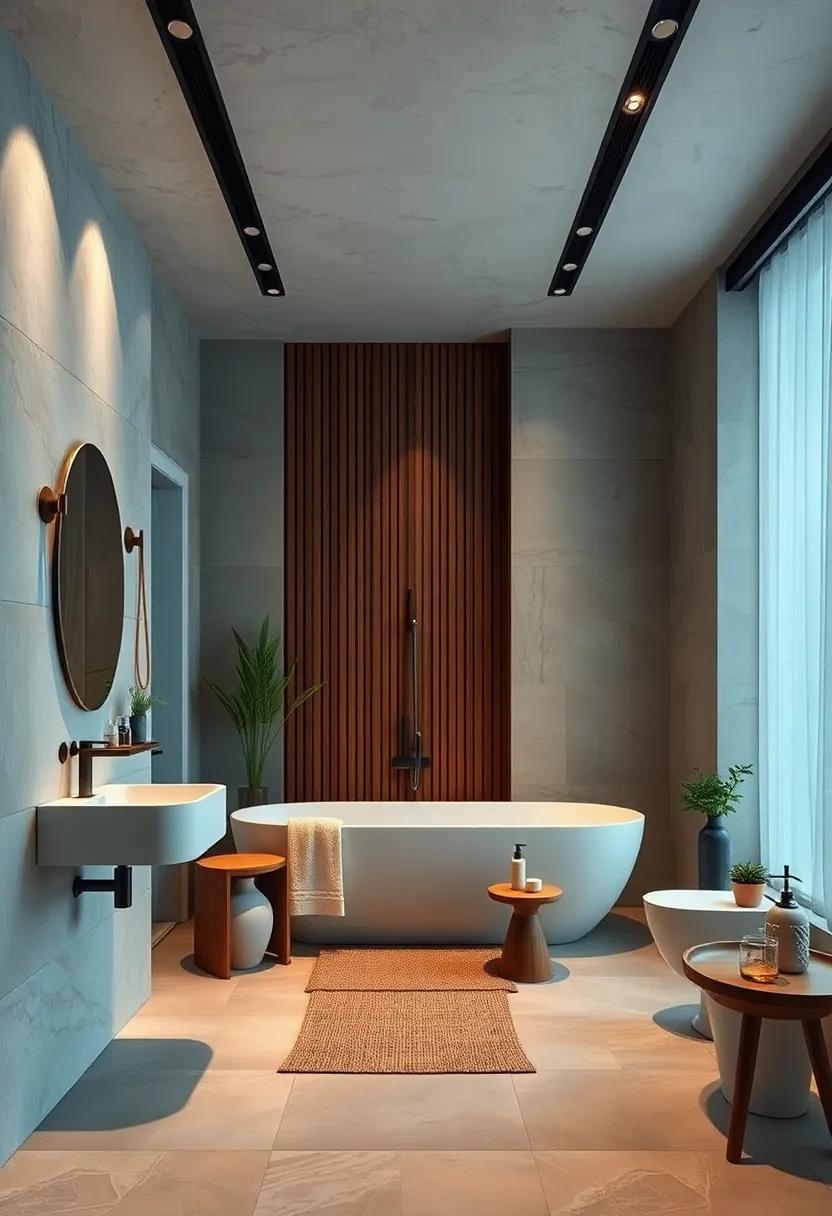
Integrating renewable energy solutions into your bathroom can prove to be both eco-friendly and cost-effective in the long run. One of the standout options is the solar water heater, which harnesses sunlight to heat water for your daily needs. By utilizing this technology, you can significantly reduce your carbon footprint while enjoying hot showers and baths without the hefty energy costs. The initial investment in solar panels can often be offset by the savings accrued over time through reduced utility bills.
When considering solar water heaters, it’s essential to choose a model that suits your space and lifestyle. Here are some factors to keep in mind:
- Solar Coverage: Ensure that your installation area receives adequate sunlight throughout the year.
- Storage Capacity: Select a system with enough capacity to meet your household’s hot water needs.
- Efficiency Ratings: Look for systems with high efficiency ratings to maximize your energy savings.
- Maintenance Requirements: Opt for systems that are low-maintenance to decrease upkeep costs.
| Type of Solar Water Heater | Pros | Cons |
|---|---|---|
| Active Systems | Efficient and reliable | Higher upfront costs |
| Passive Systems | Lower costs, easy installation | Less efficient in colder climates |
Building a Sustainable Bathtub oasis With Natural Materials and Eco-Friendly Designs
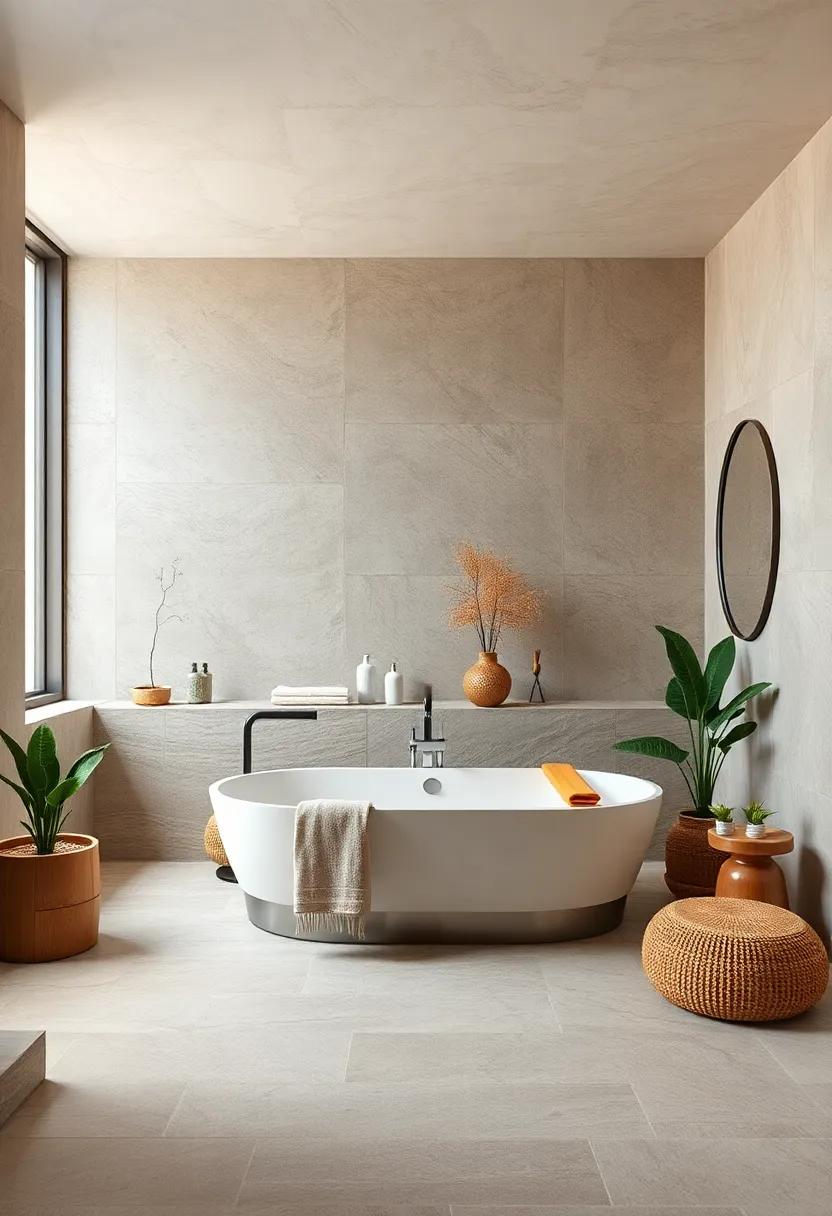
creating a serene bathtub oasis begins with the choice of materials that harmonize with the natural world. Reclaimed wood, for instance, can be used for cabinetry or accent features, adding warmth and character while preventing deforestation. Opt for natural stone tiles that not only enhance the aesthetic but also provide a cool touch, perfect for those relaxing moments. Additionally, consider incorporating bamboo accessories, known for its rapid renewability and stylish appeal.A tub crafted from local clay or cast iron can further align your oasis with sustainable principles, offering durability and a timeless design.
To enhance the eco-friendly theme, integrate water-saving fixtures and energy-efficient lighting. Low-flow showerheads and dual-flush toilets can significantly reduce water consumption without sacrificing comfort. Complement these elements with LED lighting options that provide brightness while consuming less power. A carefully curated selection of indoor plants, such as ferns or peace lilies, not only purifies the air but also adds vibrant life to your space.As you embrace these choices, you’ll be crafting a bathroom sanctuary that prioritizes both comfort and the environment, creating a truly sustainable retreat.
Creating an Inviting Atmosphere Through Color Palettes Inspired by Nature
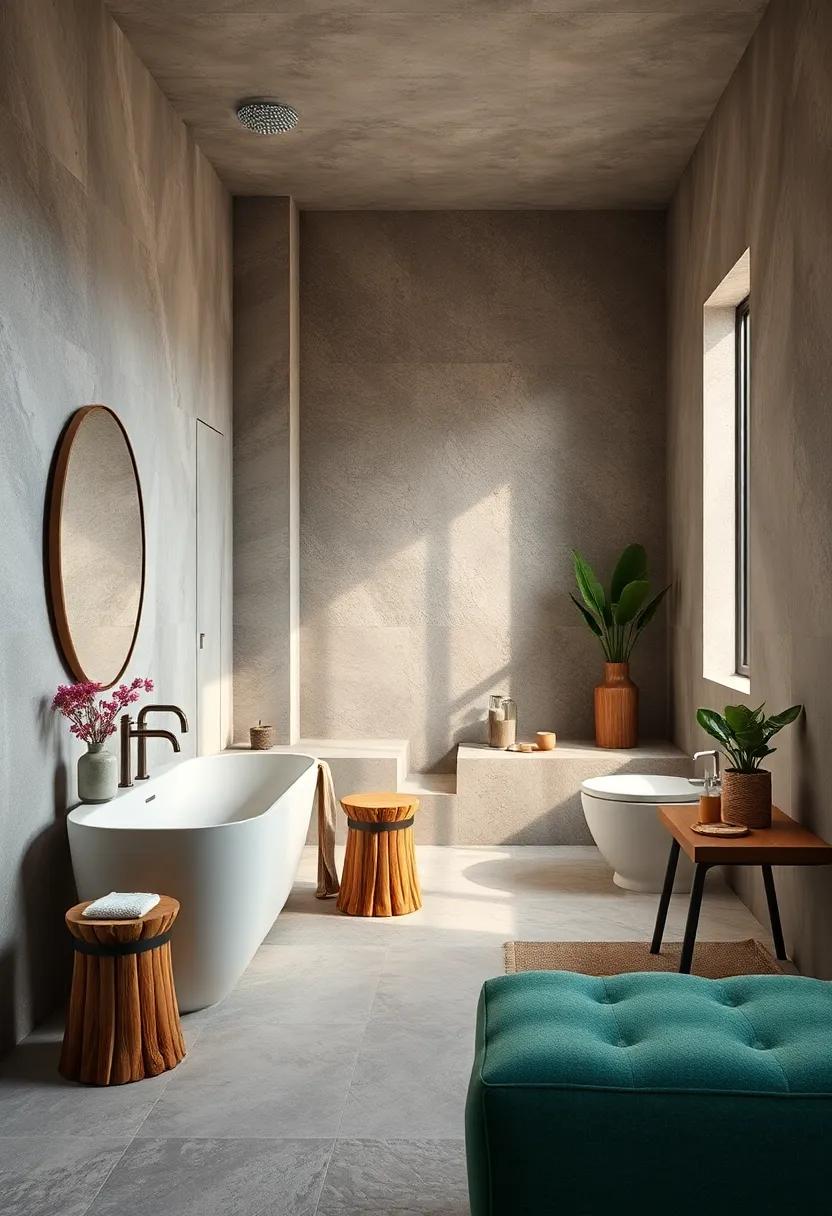
One of the most effective ways to establish a calming and inviting environment in your bathroom is by selecting color palettes that draw inspiration from the natural world. Soft greens reminiscent of lush foliage can evoke a sense of tranquility, while gentle blues may bring the serene quality of a clear sky or calm waters into your space. Consider incorporating hues like sage green, ocean blue, and earthy brown to create a harmonious atmosphere. This approach not only enhances the aesthetics of the room but also promotes a more sustainable and eco-friendly mindset by choosing colors that reflect the beauty of the environment.
When planning your design, think about the combination of colors that work together to produce a cohesive look. A thoughtful selection can elevate both the visual appeal and your overall mood. Consider these strategies to integrate nature-inspired colors:
- Accent walls painted in deep forest green or soft clay.
- Textiles like towels or curtains featuring botanical prints
- Natural elements like wood accents painted in warm tones.
This natural approach not only fosters a soothing atmosphere but also echoes your commitment to sustainable practices, allowing the bathroom to become a serene sanctuary that celebrates the essence of nature.
Reviving Vintage Fixtures for a Sustainable and Stylish Bathroom Upgrade
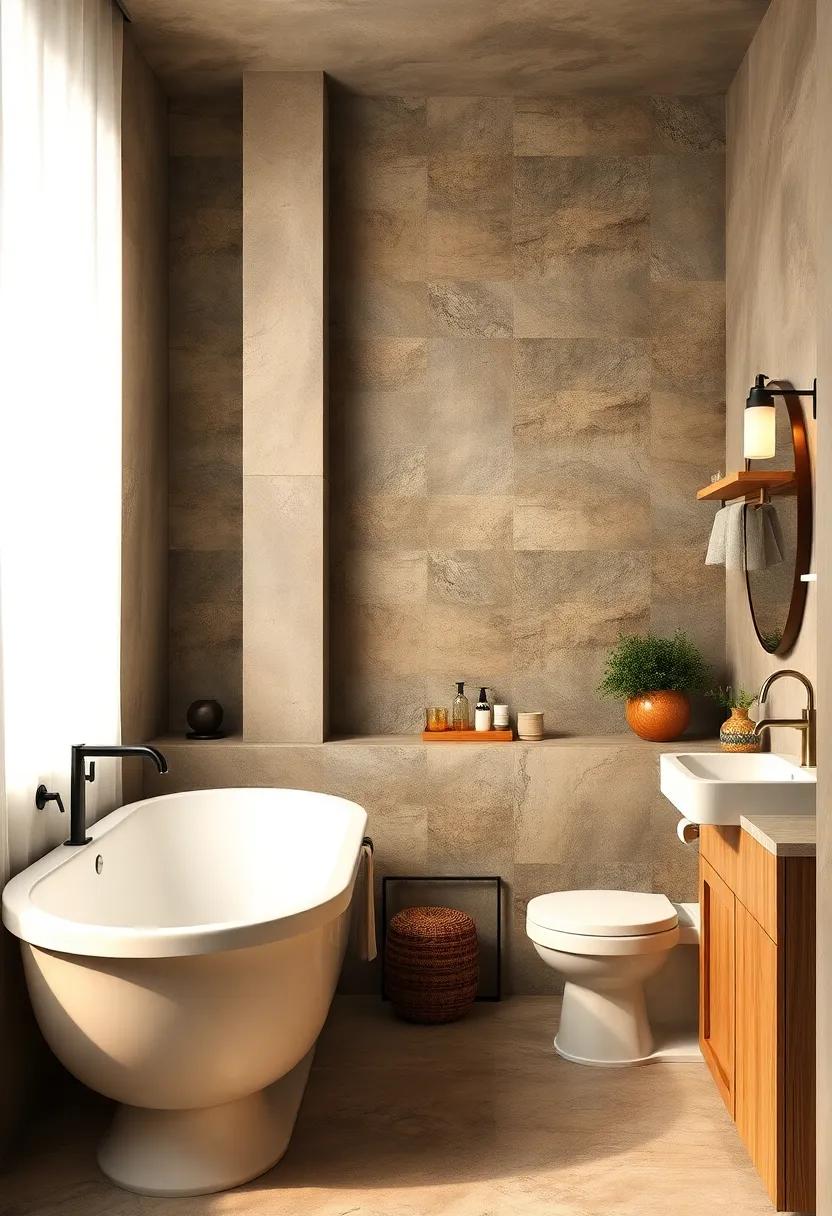
Incorporating vintage fixtures into your bathroom not only enhances its aesthetic charm but also contributes to a more sustainable environment. By choosing to revive or repurpose these timeless pieces, you can minimize waste and reduce the demand for new manufacturing. Consider the appeal of a classic clawfoot tub or an antique pedestal sink; each carries a story and character that modern designs often lack. To ensure style and functionality, look for local artisans who specialize in refinishing vintage plumbing fixtures, allowing you to personalize your space while maintaining a commitment to sustainability.
Here are some ideas for integrating vintage elements into your bathroom design:
- Repurposed Lighting: Look for vintage sconces or chandeliers that can be restored with energy-efficient bulbs, creating an elegant yet eco-friendly ambiance.
- Salvaged Accessories: Incorporate items like reclaimed wood shelves or antique cabinets that add a rustic touch while providing practical storage solutions.
- Time-honored Tile: Use patterned, reclaimed tiles to add personality to your floors or walls, embracing a retro vibe that complements vintage fixtures.
To simplify your renovation process, consider the following table highlighting essentials for selecting vintage fixtures:
| Fixture Type | Considerations |
|---|---|
| Faucets | Ensure compatibility with your plumbing while looking for classic designs. |
| Vanities | Check wood condition and functionality; refinishing might be needed. |
| mirrors | Find unique framing styles that enhance overall décor and vintage charm. |
Exploring The Role of Sustainable Distinctive Icons in bathroom Design
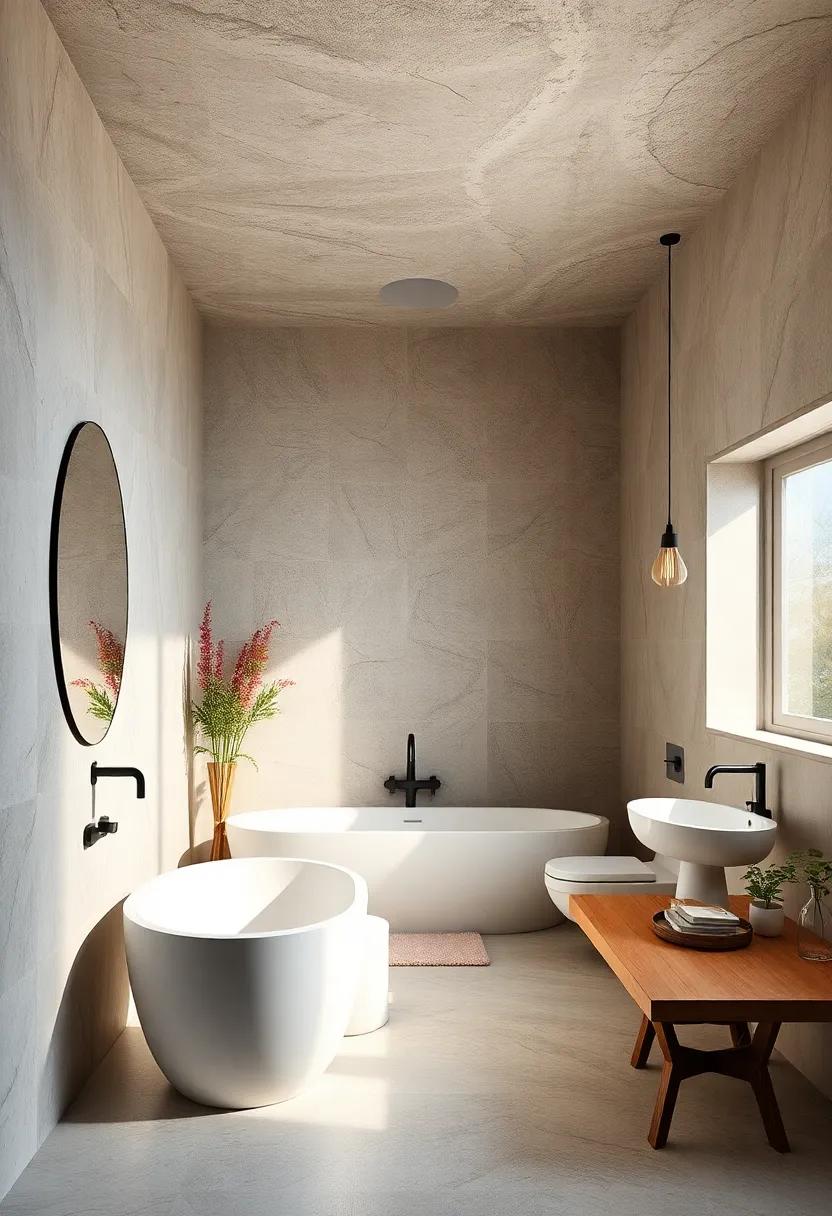
In the realm of bathroom design,sustainable distinctive icons serve as both functional elements and artistic statements. These pieces, ranging from eco-friendly fixtures to innovative tile patterns, highlight the unique character of a space while prioritizing environmental responsibility.Incorporating materials such as reclaimed wood, bamboo, or recycled glass not only enhances aesthetic appeal but also reduces the carbon footprint of your bathroom remodel. Consider these notable sustainable elements that can transform your space into an eco-conscious oasis:
- Low-flow faucets and showerheads: Reduce water waste without sacrificing performance.
- natural stone tiles: Durable and timeless, they are often sourced sustainably.
- Energy-efficient lighting: Use LED options to save energy while illuminating your design.
- Eco-friendly vanities: Crafted from sustainable materials, they combine style and sustainability.
To further underscore the impact of these design choices, consider implementing elements that encourage mindfulness and a connection to nature. As an example, incorporating indoor plants or creating a zen-inspired space can promote tranquility and enhance air quality. Additionally, your choice of color palette can reflect themes of sustainability—earthy tones evoke a sense of grounding, while luminous, nature-inspired hues can invigorate the environment. Here’s a simple comparison of traditional versus sustainable bathroom features:
| Traditional Features | Sustainable Features |
|---|---|
| Standard porcelain sinks | Recycled glass or bamboo sinks |
| Plastic shower curtains | Organic cotton or hemp shower curtains |
| Conventional light bulbs | LED lighting solutions |
Inventive Strategies for Organizing a Sustainable Bathroom with Style
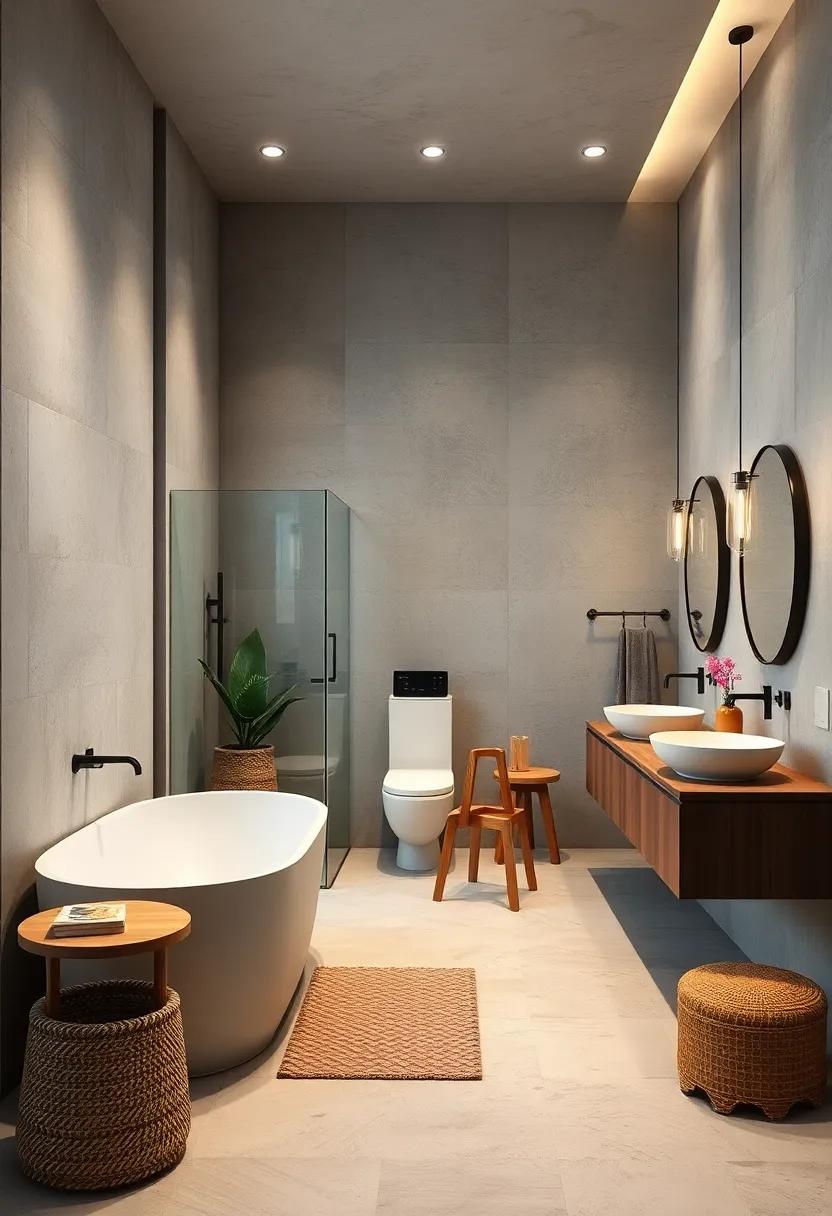
Transform your bathroom into a sanctuary of sustainability with clever storage solutions that marry functionality with chic design. Consider installing floating shelves where you can display eco-friendly products, plants, or tasteful decor, making use of vertical space while keeping essentials easily accessible. Use bamboo baskets or recycled fabric bins to categorize towels, toiletries, and cleaning supplies, creating a clutter-free environment that promotes tranquility. For a pop of color, add reusable cotton bags to store your favorite sustainably sourced bath items, giving your space a lively twist while remaining eco-conscious.
To elevate both style and sustainability, opt for natural materials such as reclaimed wood or cork for your bathroom accessories. incorporate a multifunctional vanity that blends storage with style, featuring deep drawers made from sustainable materials to hold your beauty regime neatly. Integrating a smaller,eco-friendly mirror with built-in storage can streamline your morning routine while reflecting your commitment to a greener lifestyle. Furthermore, a simple DIY herb garden in a sunny corner can enhance your decor and provide fresh scents, making your bathroom not just beautiful, but a genuine retreat for eco-conscious living.
Crafting a Bathroom Sanctuary Through Biophilic Design Principles
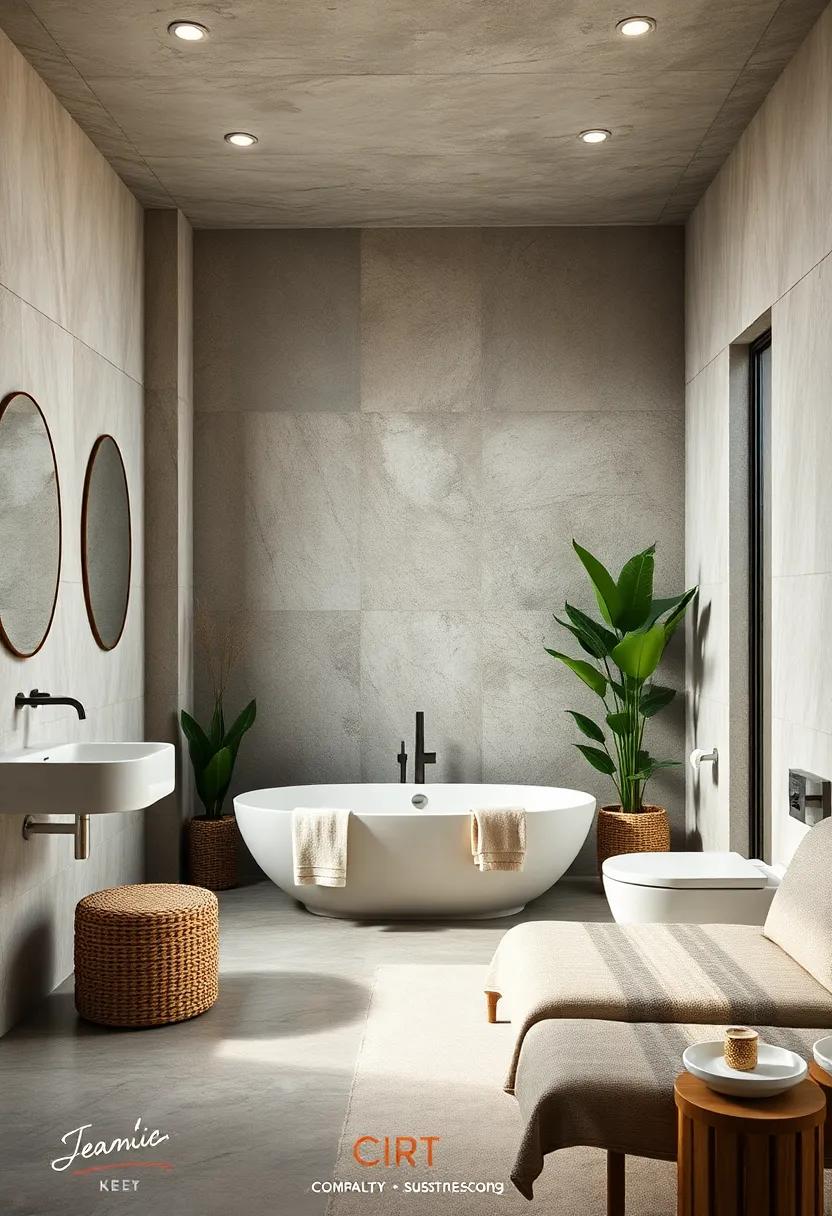
incorporating nature into bathroom design not only enhances aesthetics but also contributes to overall well-being. By utilizing biophilic design principles, you can create a soothing environment that invites relaxation and rejuvenation. Color palettes inspired by nature, such as earthy tones and calming greens, can set the stage for tranquility. Additionally,consider the use of natural materials like bamboo,stone,and reclaimed wood,which not only bring warmth but also reduce your ecological footprint.
Integrating elements like plants, natural light, and water features can significantly improve the ambiance of your space. Indoor plants, such as ferns or spider plants, can filter air and add a refreshing touch.To maximize light, opt for larger windows or skylights that invite sunlight into your bathroom, further bridging the gap between the indoors and outdoors.Lastly, the gentle sound of water, whether from a small fountain or a rain showerhead, can mimic calming natural environments, enhancing the sensory experience of your sanctuary.
Celebrating Japanese Design Influence for Minimalism and Sustainability in Bathrooms
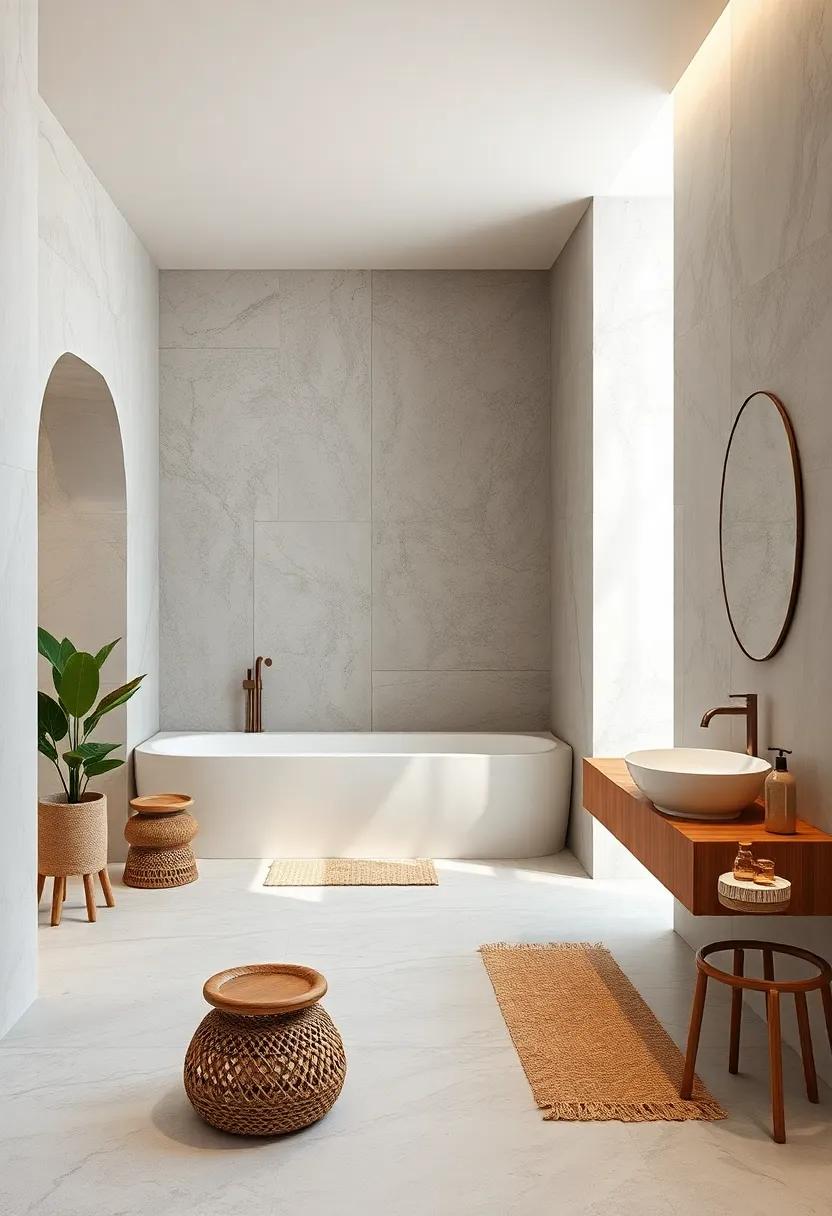
Japanese design beliefs places a strong emphasis on simplicity and sustainability, making it a perfect fit for modern bathroom spaces. by embracing elements such as natural materials, clean lines, and neutral palettes, homeowners can create serene environments that reflect tranquility. Incorporating features like tatami mats, wooden bathtubs, and sliding shoji screens not only enhances aesthetics but also promotes eco-friendliness.These elements help reduce the need for excess materials while ensuring a natural flow of light and air, creating an inviting retreat that aligns with a sustainable lifestyle.
to further champion a greener future, consider using materials sourced from sustainable practices. Select fixtures and finishes that prioritize water efficiency and energy savings.Here’s a quick guide to elements you might include in your sustainable bathroom redesign:
| Element | Benefit |
|---|---|
| Low-flow faucets | Saves water without sacrificing pressure |
| Recycled materials | Reduces waste and supports eco-friendly manufacturing |
| LED lighting | Energy-efficient with long lifespan |
| plant-based finishes | Minimizes harmful chemicals in your home |
Exploring The Importance of Ventilation for A Healthier bathroom Environment
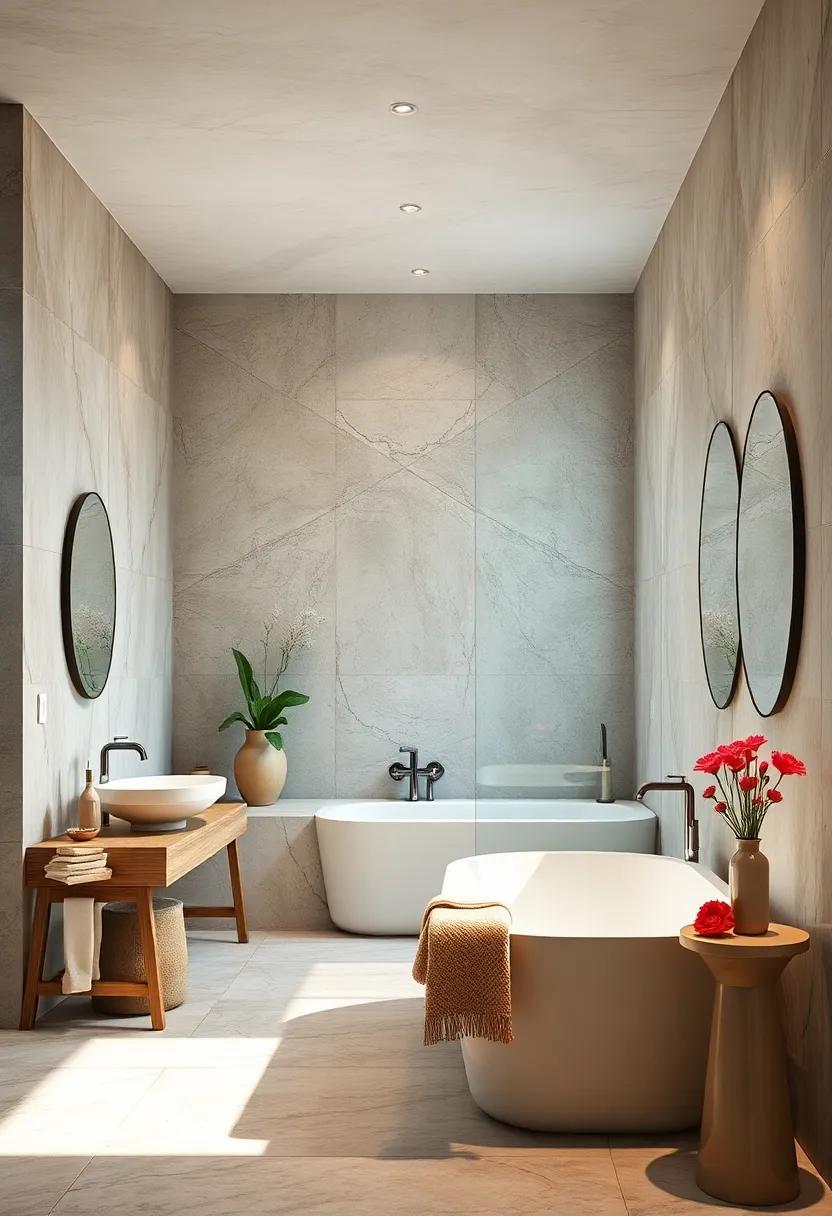
Ventilation plays a crucial role in maintaining a healthy bathroom environment, ensuring that humidity and moisture levels remain in check. Proper airflow helps to prevent the growth of mold and mildew,which can contribute to respiratory issues and other health concerns. When it comes to sustainable bathroom design, incorporating ventilation systems that maximize energy efficiency is essential. Consider options such as:
- Exhaust fans: These can effectively remove excess moisture and unpleasant odors.
- Windows: Natural ventilation through operable windows allows fresh air circulation and minimizes reliance on mechanical systems.
- Passive Ventilation: Utilizing architectural designs that promote airflow without additional energy consumption.
In addition to improving air quality, effective ventilation contributes to the longevity of bathroom materials. High humidity can wreak havoc on everything from paint and wood to fixtures and tiles. By ensuring appropriate ventilation, homeowners can protect their investment and maintain the beauty of their spaces. Here’s how the right ventilation choices can enhance bathroom ambiance:
| Ventilation Method | Benefits |
|---|---|
| Exhaust Fan | Reduces moisture and odors efficiently. |
| Operable Window | Provides fresh air and natural light. |
| Ceiling Vent | promotes even airflow across the bathroom. |
Future Outlook
As we conclude our journey through the world of sustainable bathroom design, we invite you to envision your personal oasis as not just a sanctuary of relaxation, but also a champion of environmental stewardship. By embracing eco-friendly materials, innovative fixtures, and mindful practices, you can transform your bathroom into a space that reflects your commitment to a greener future. each small change carries the potential for significant impact, reminding us that sustainability begins at home.
As you embark on this transformative endeavor, consider the ripple effects of your choices—not only in your own space but also in the broader community. together,let’s redefine luxury and beauty in our bathrooms,making them eco-conscious havens that inspire others to follow suit. With every step toward a sustainable design, you’re not just enriching your life; you’re participating in a larger movement towards a more harmonious coexistence with our planet.Embrace this opportunity to innovate, create, and contribute, as we work together towards a brighter, greener tomorrow.
